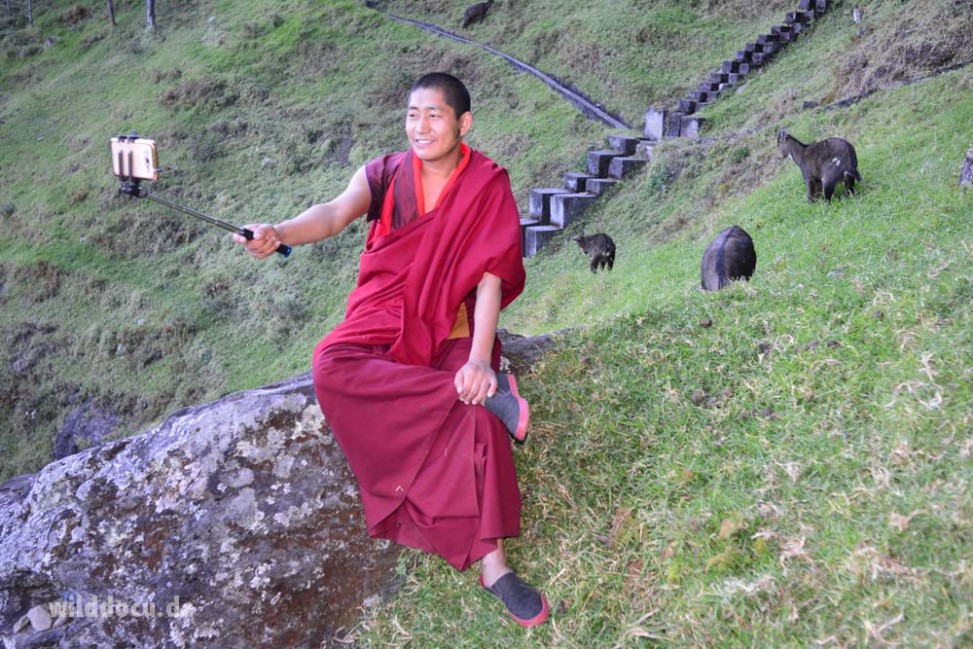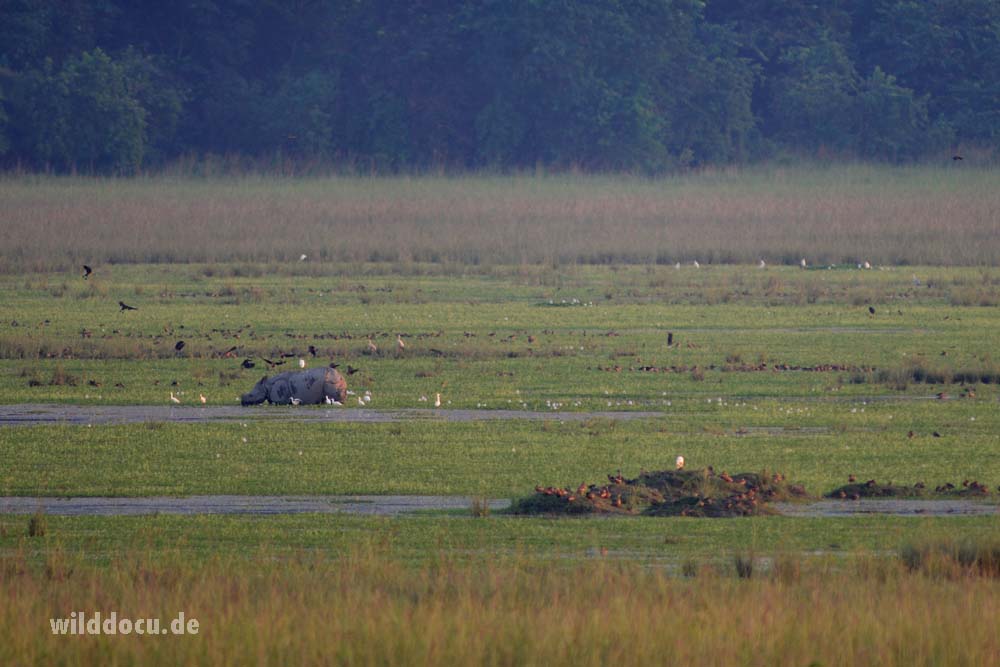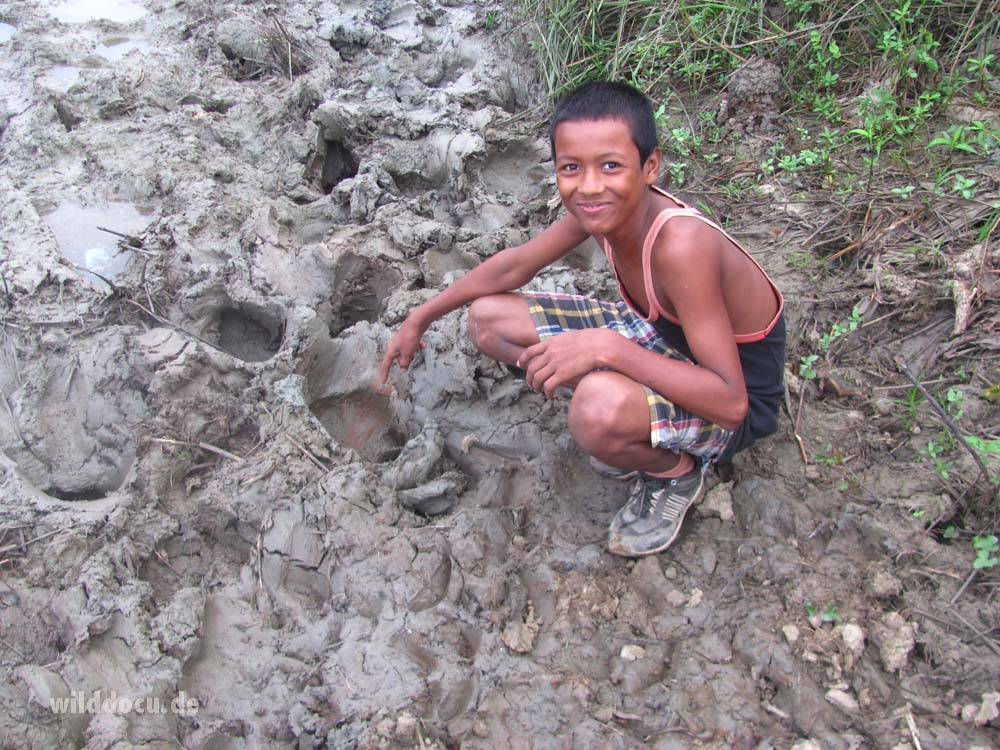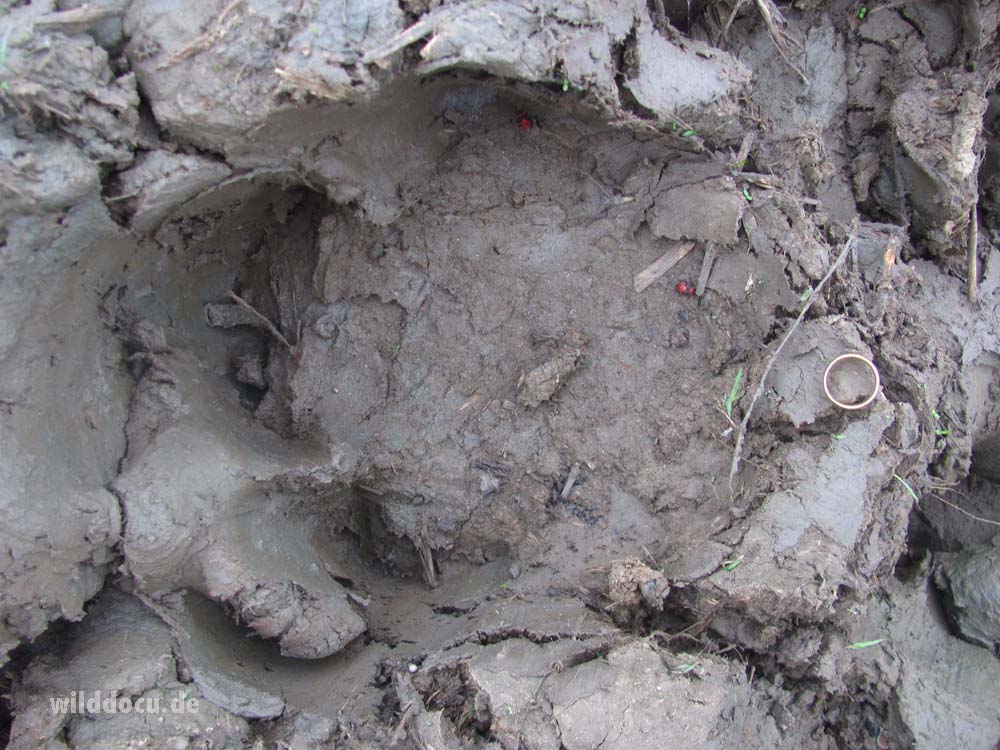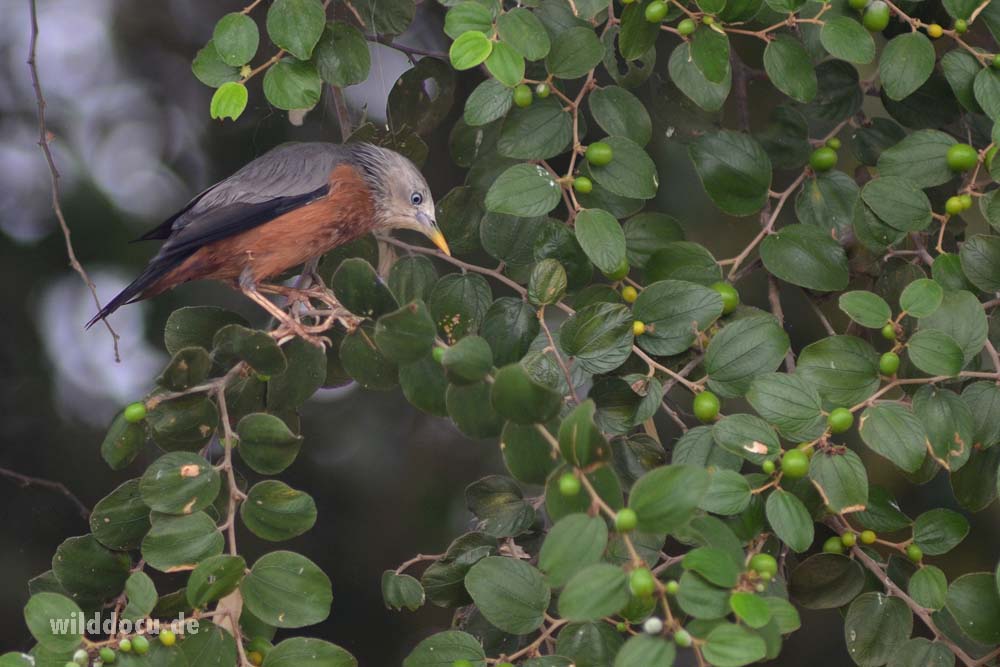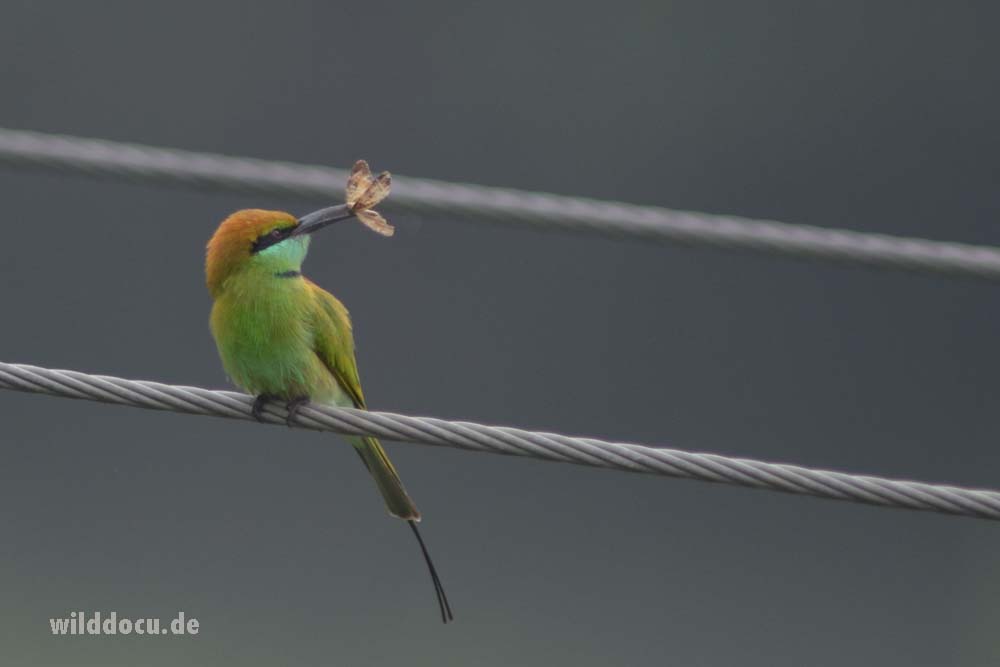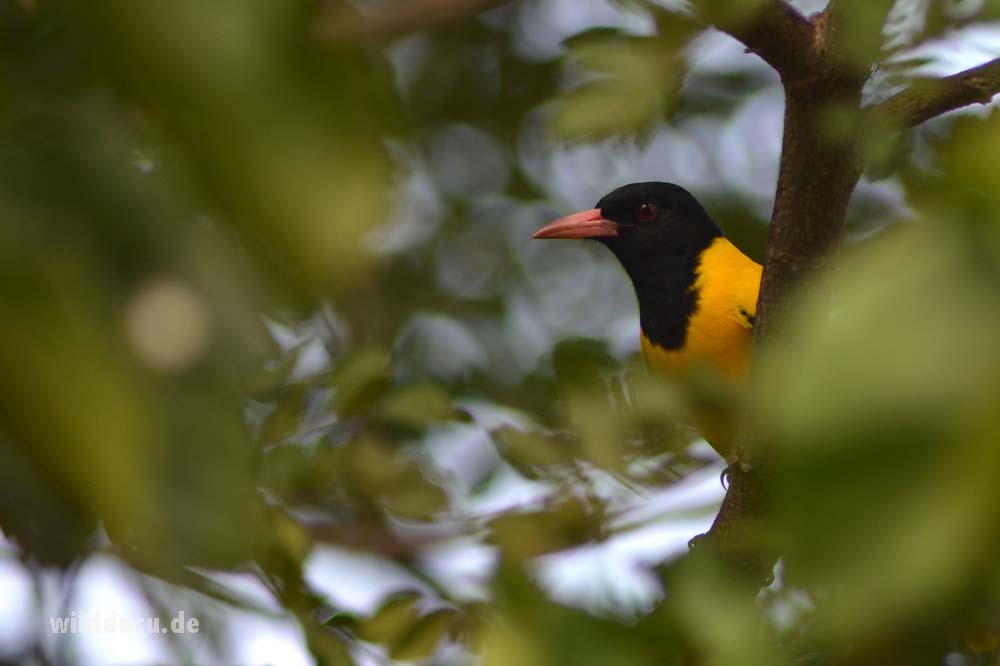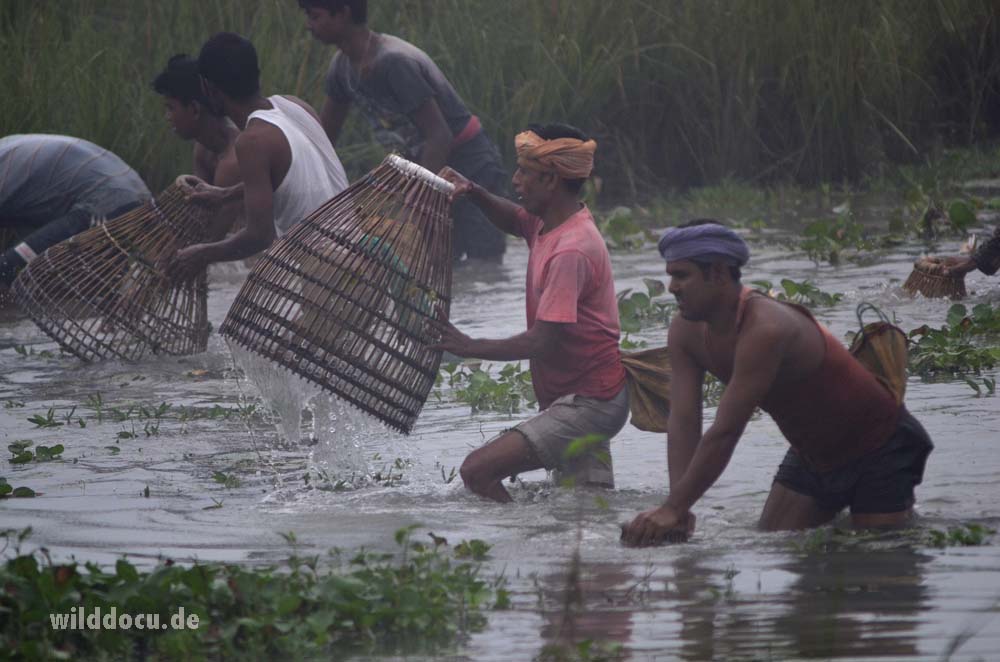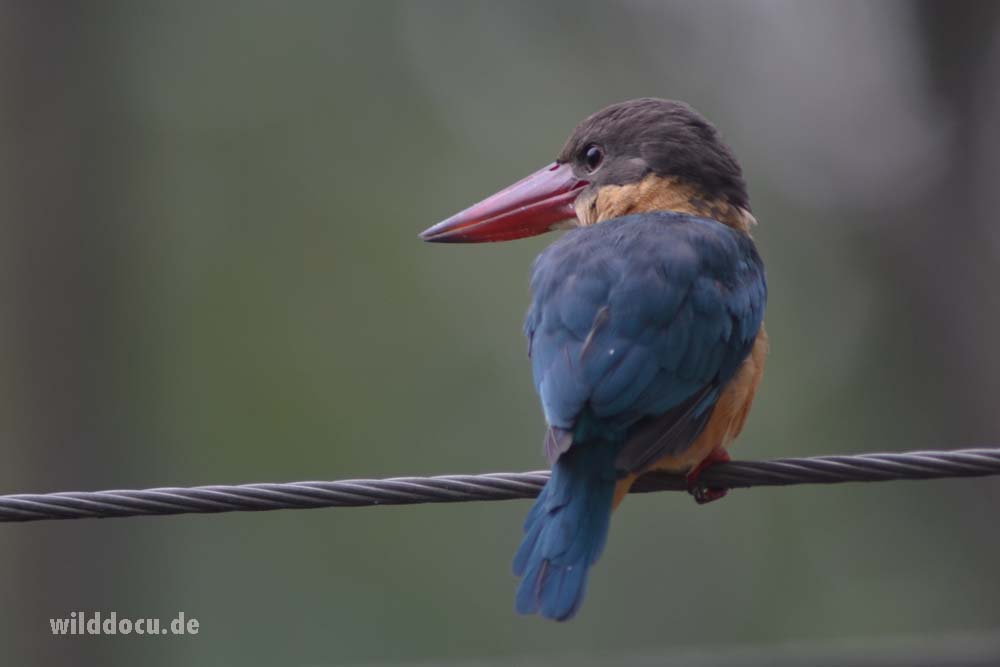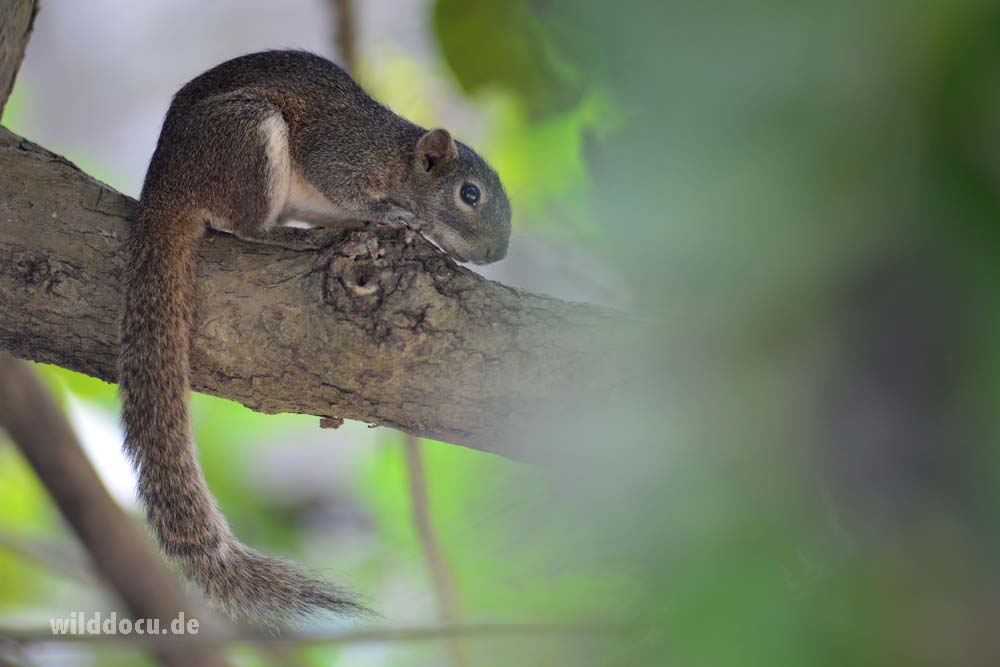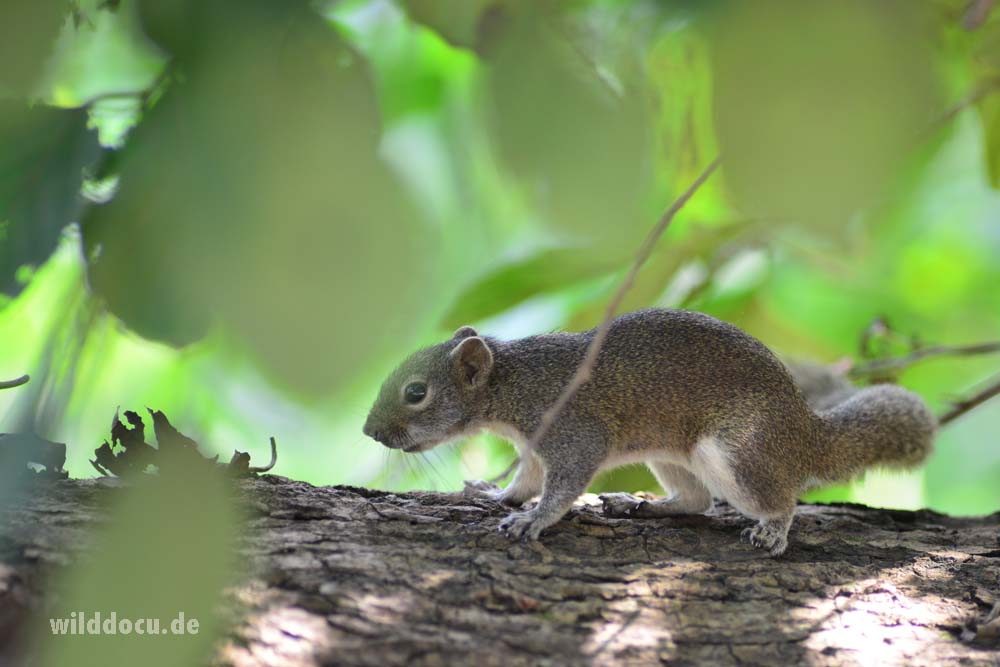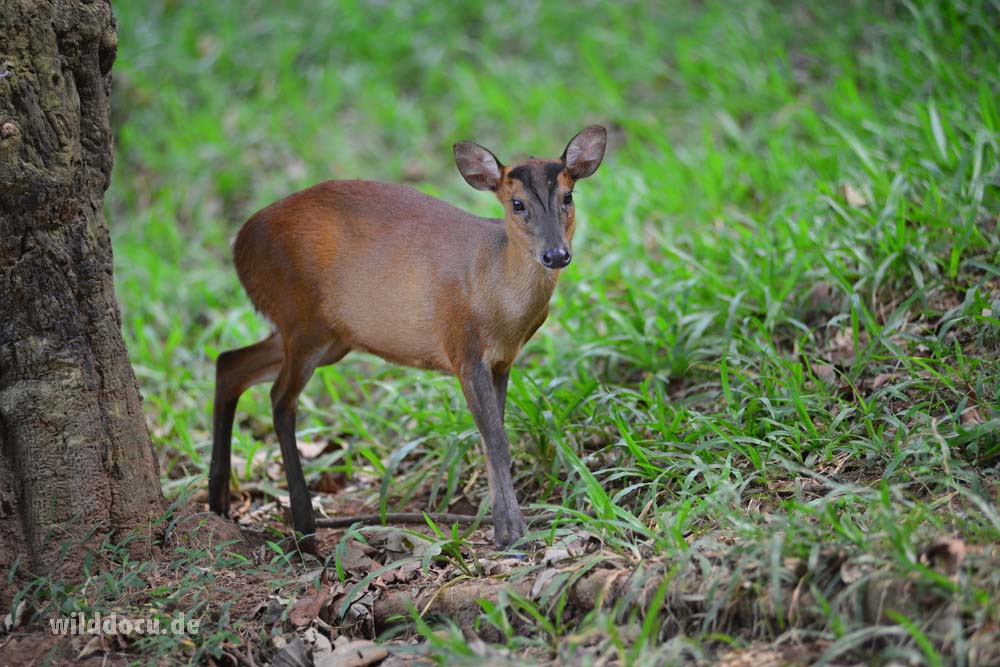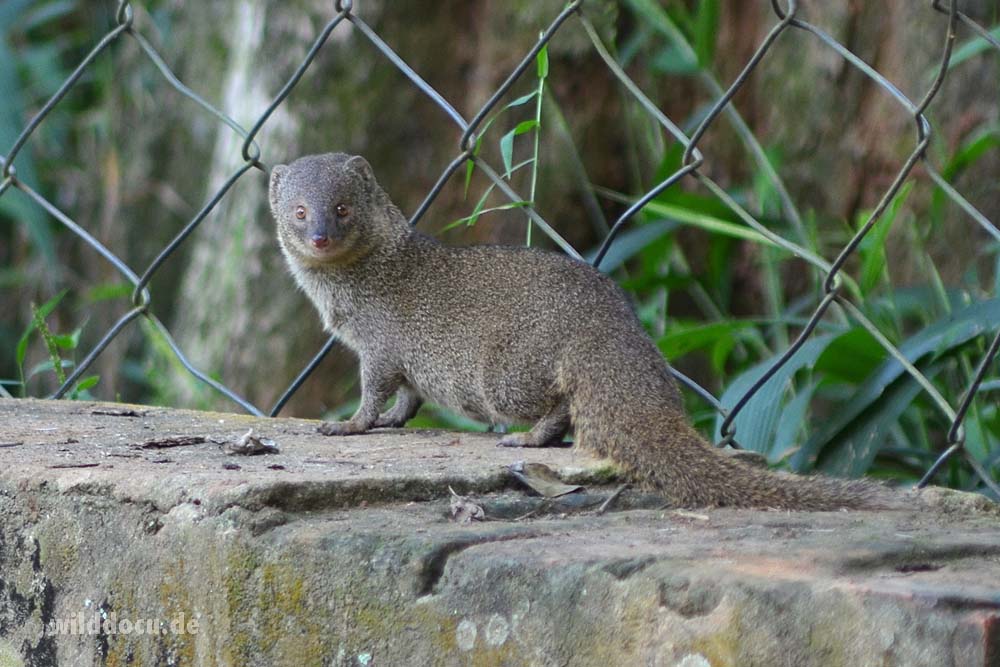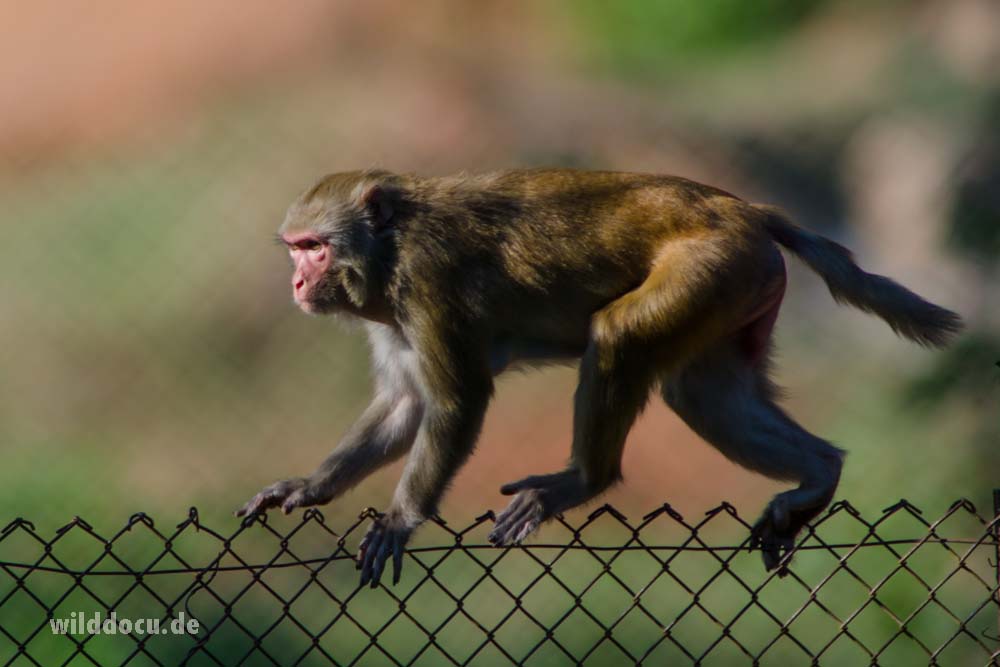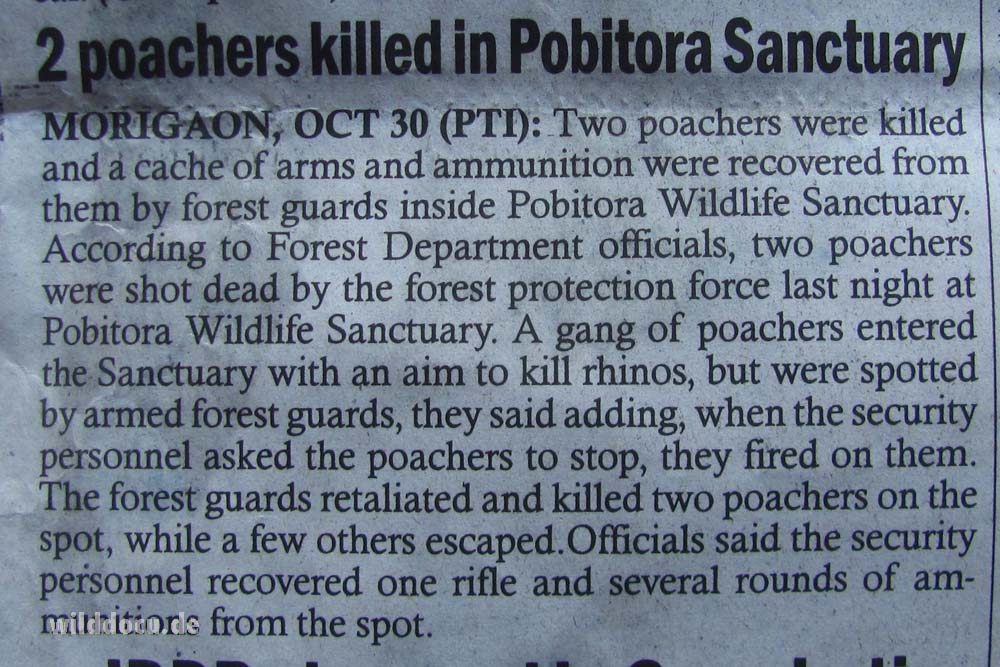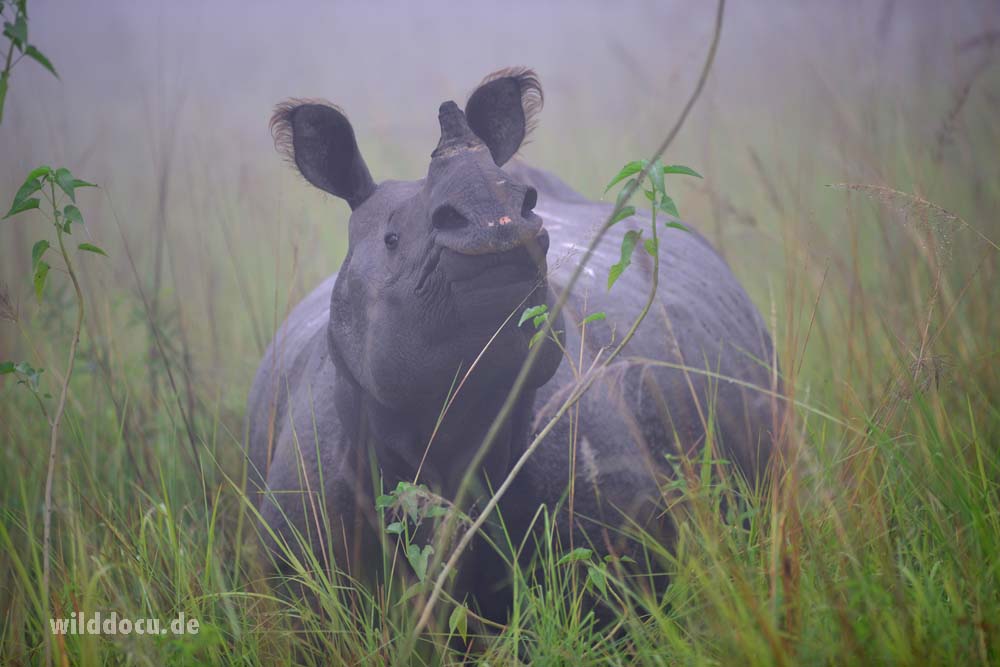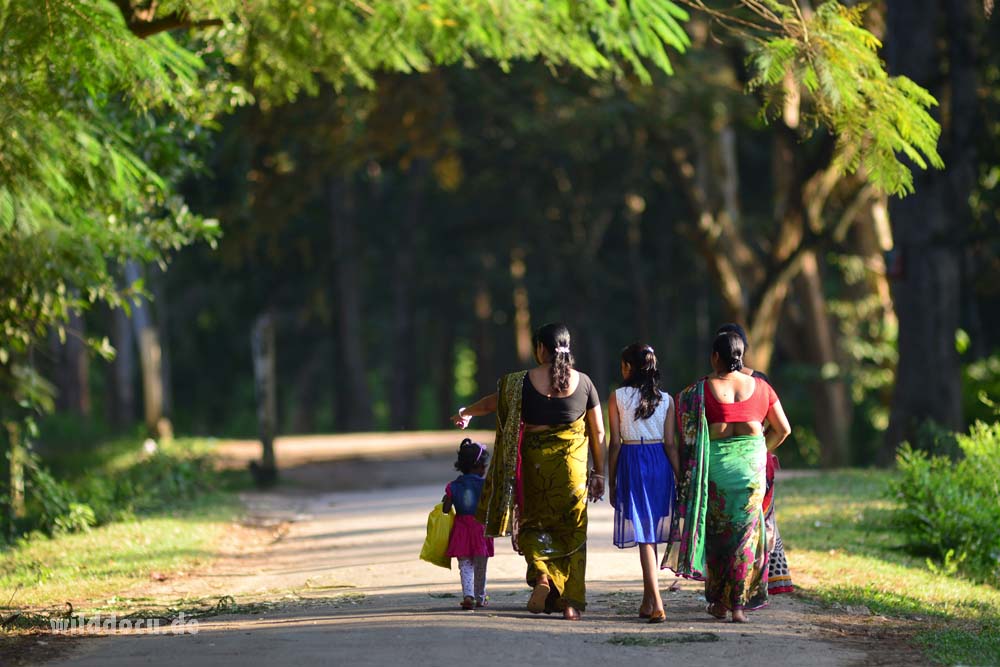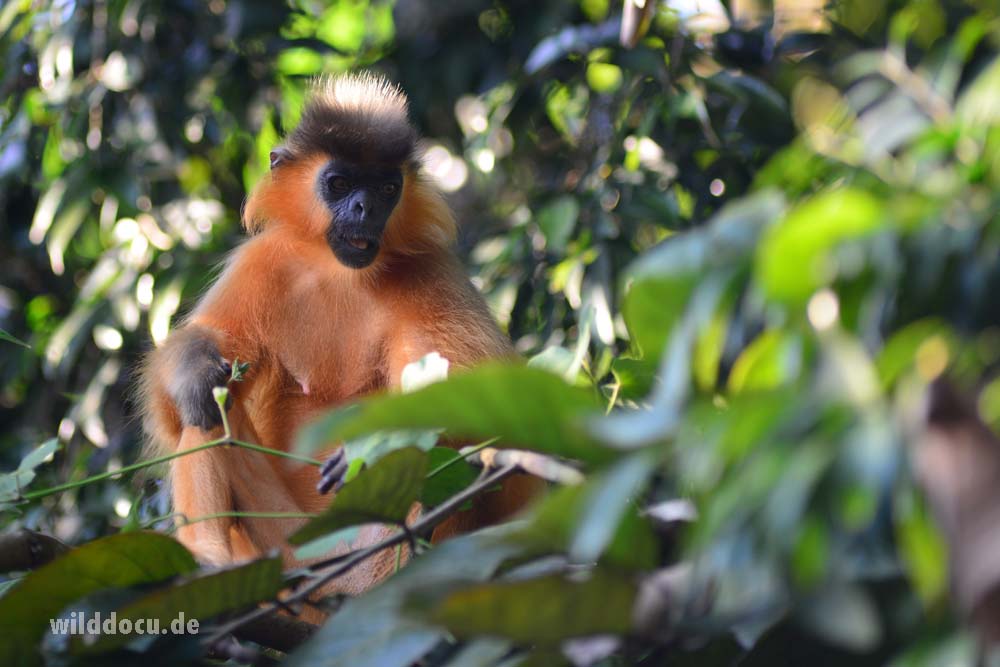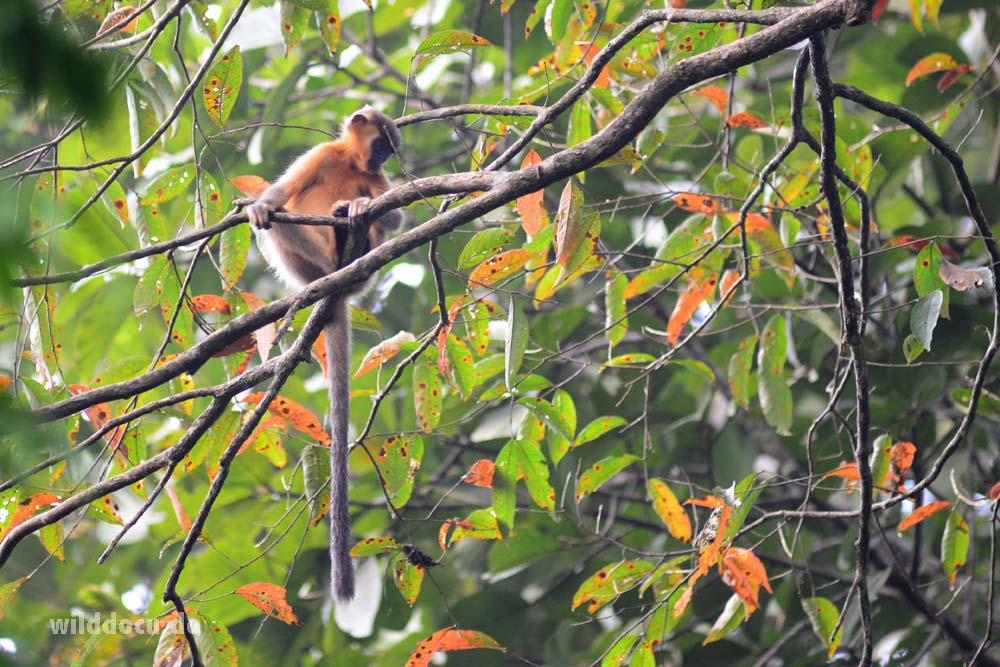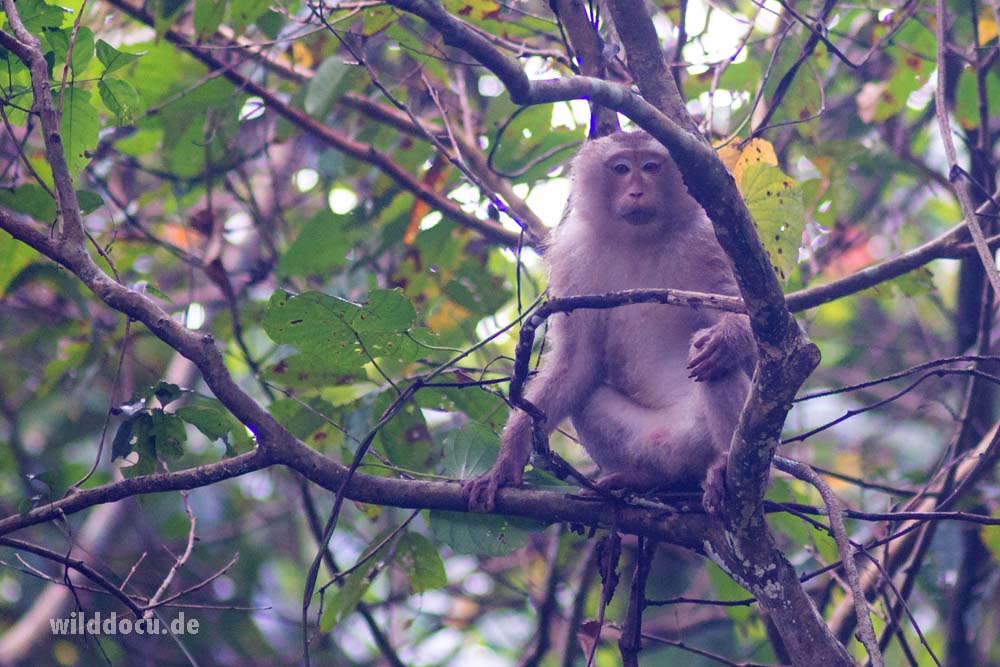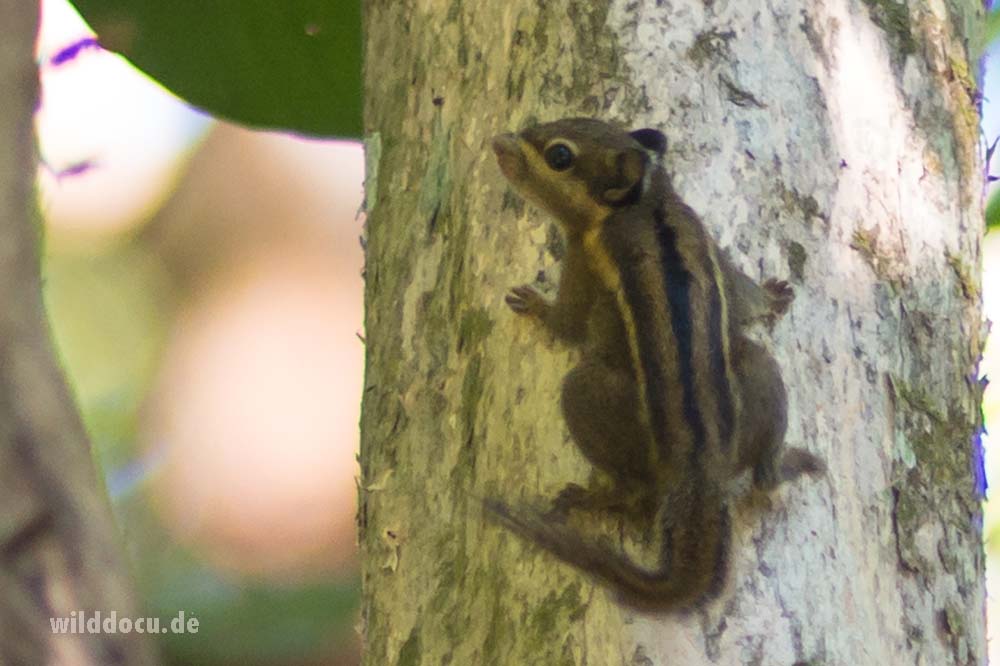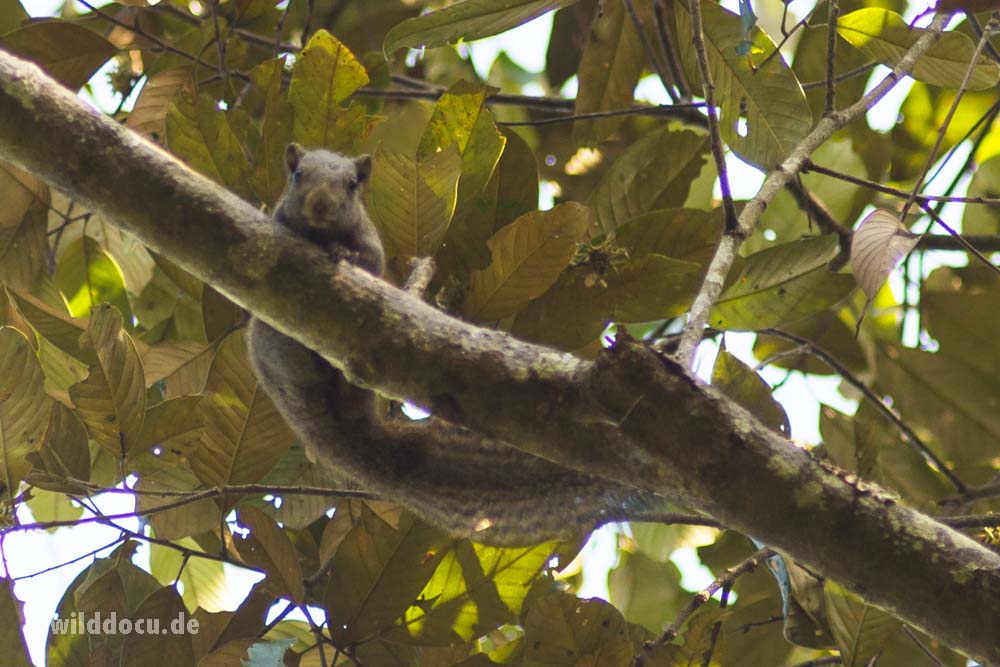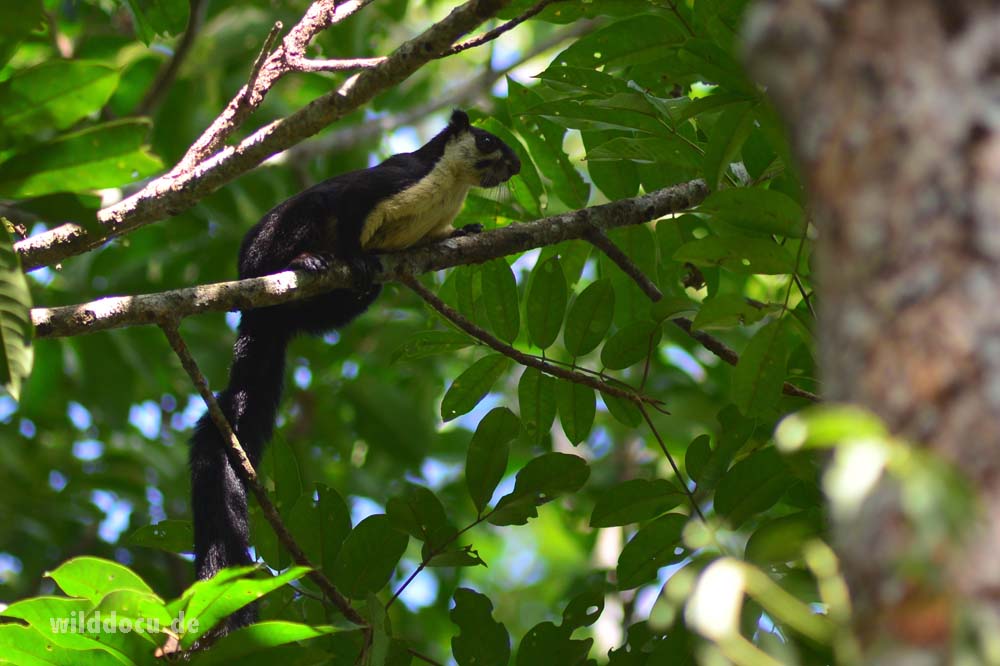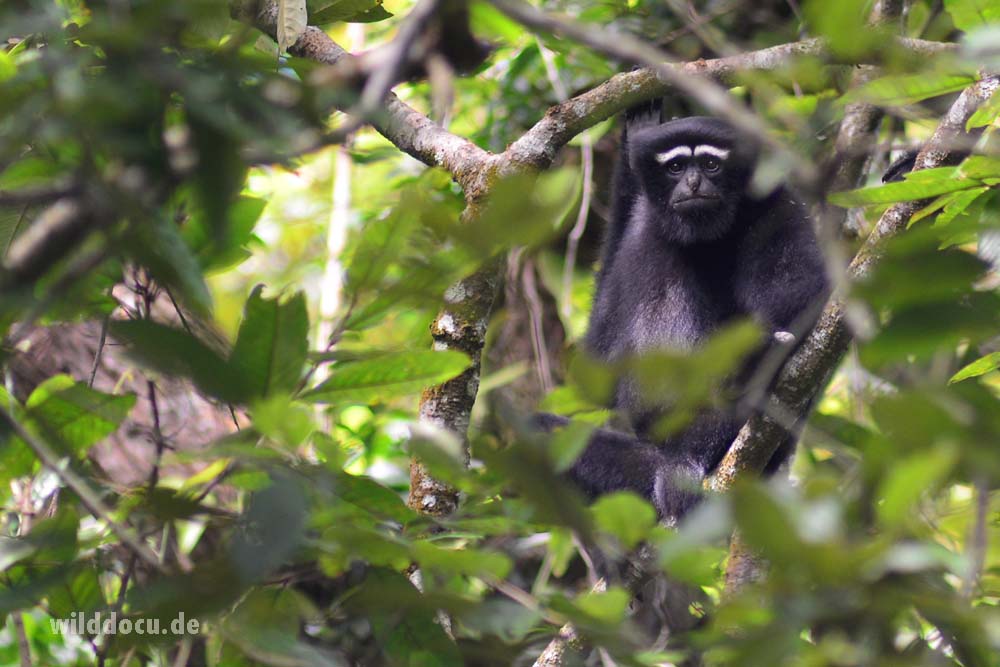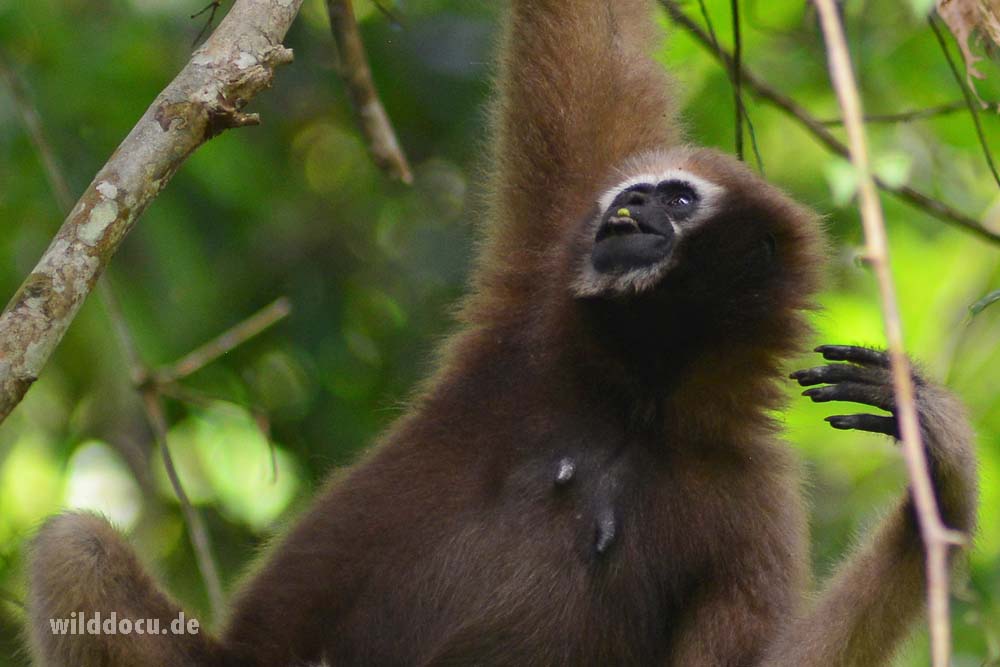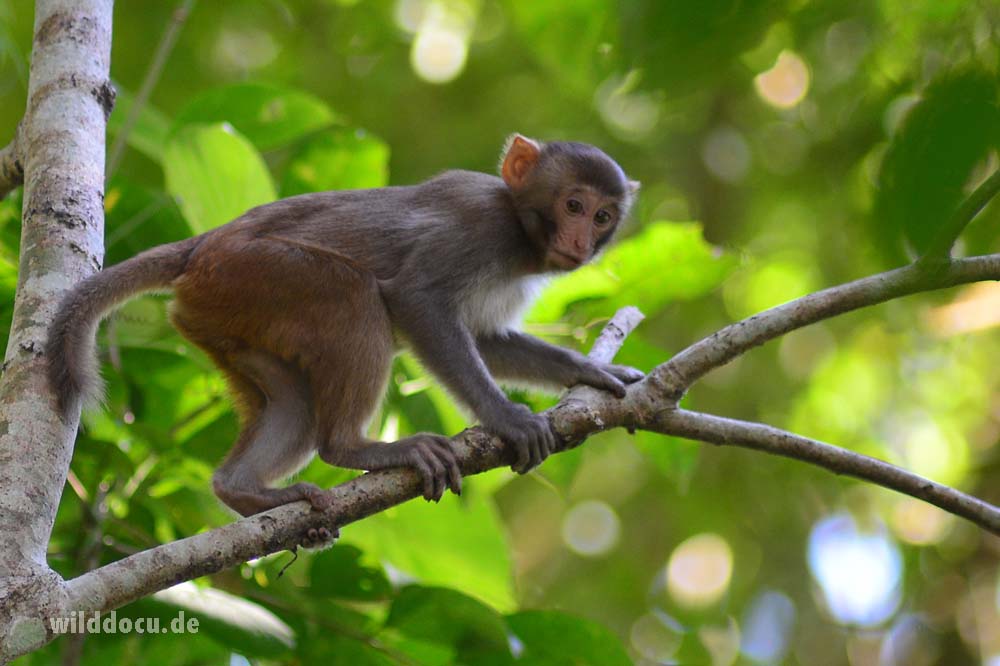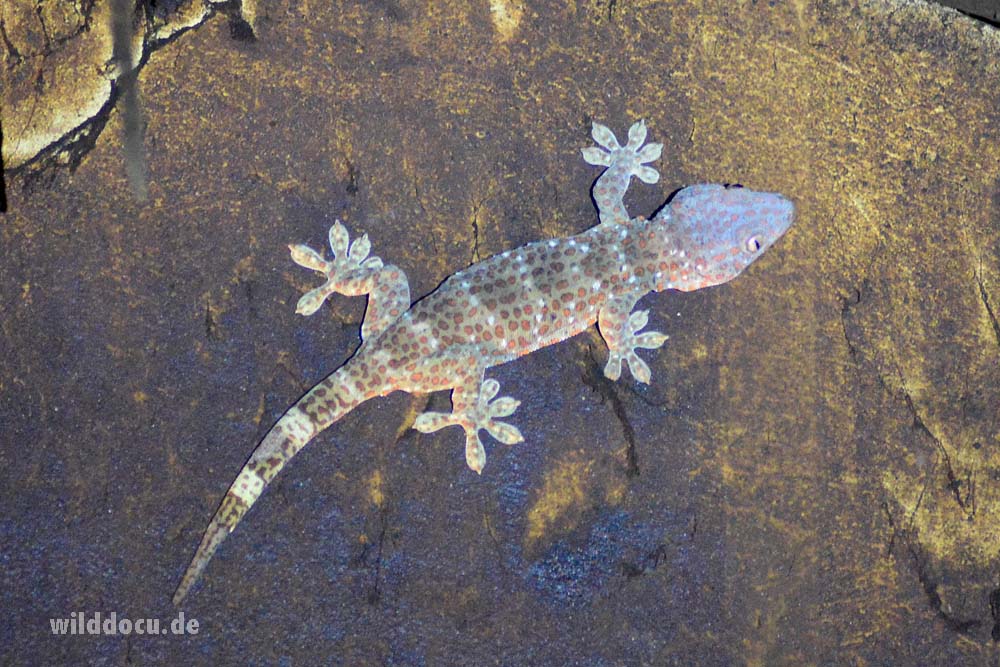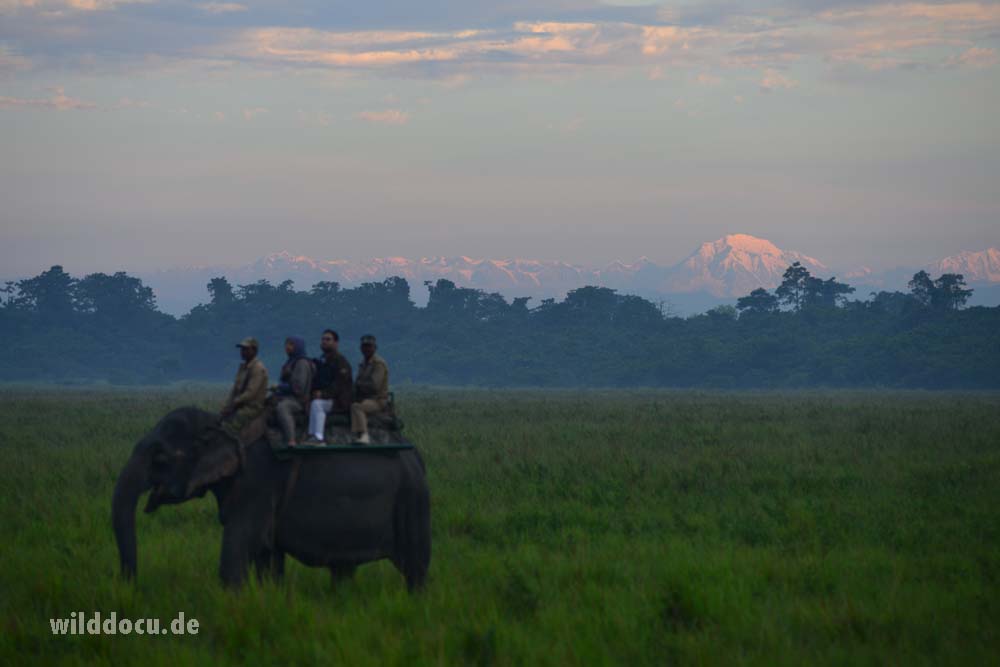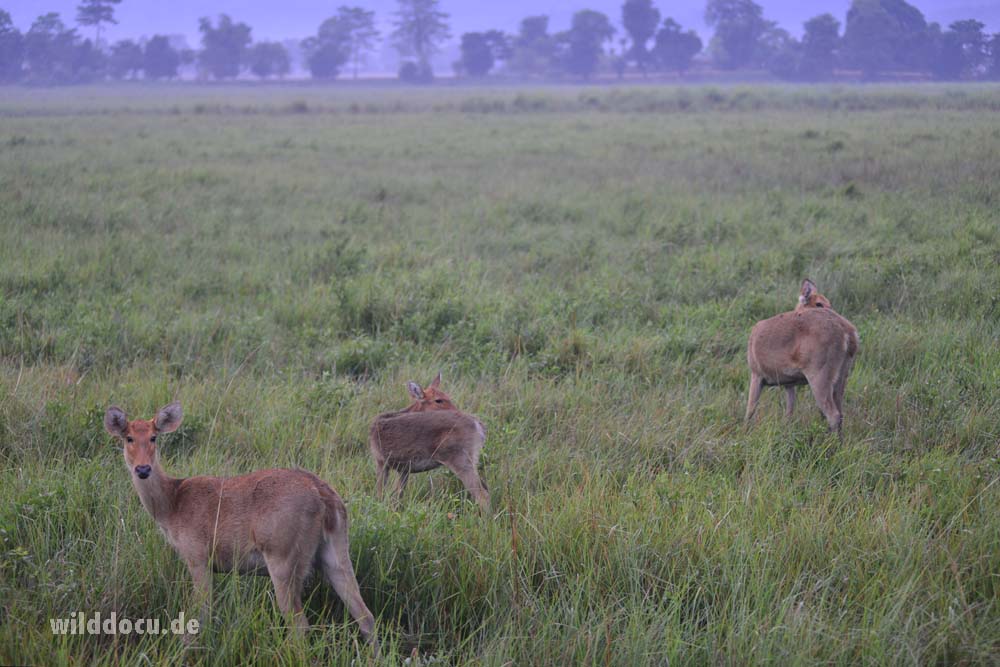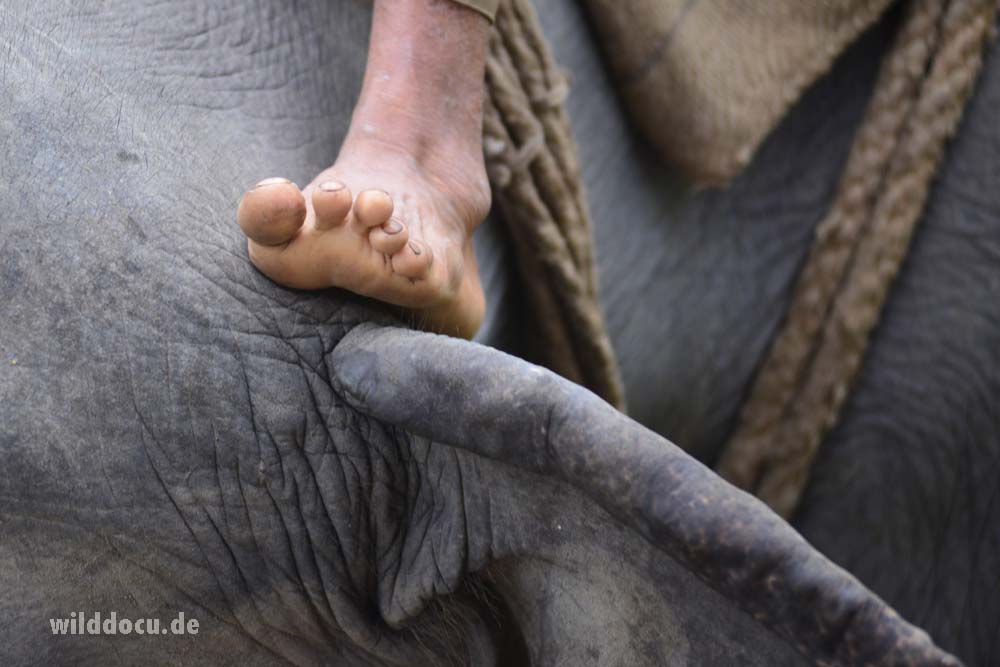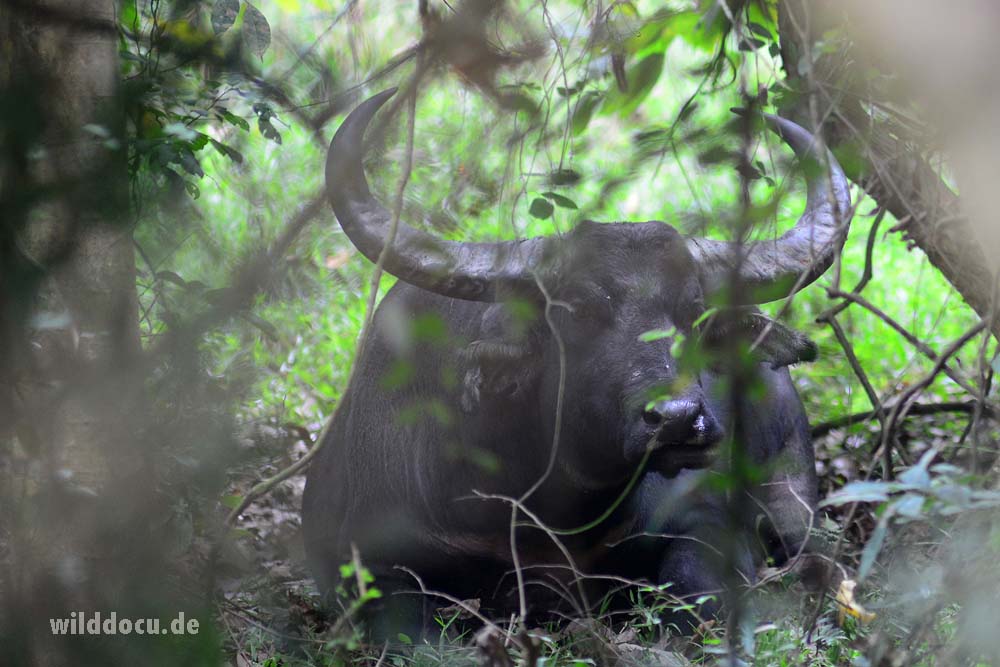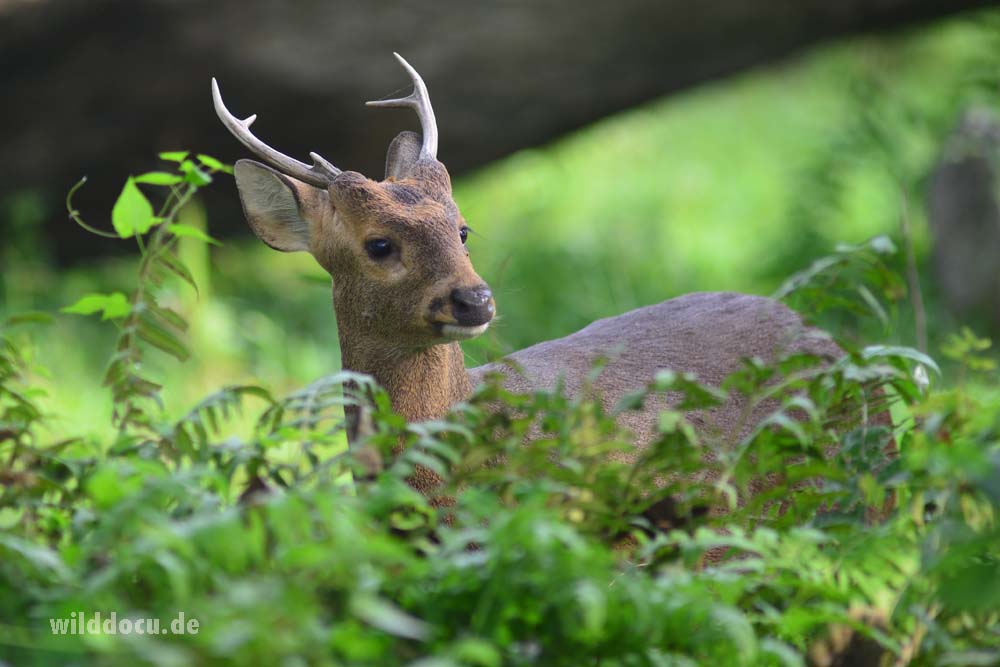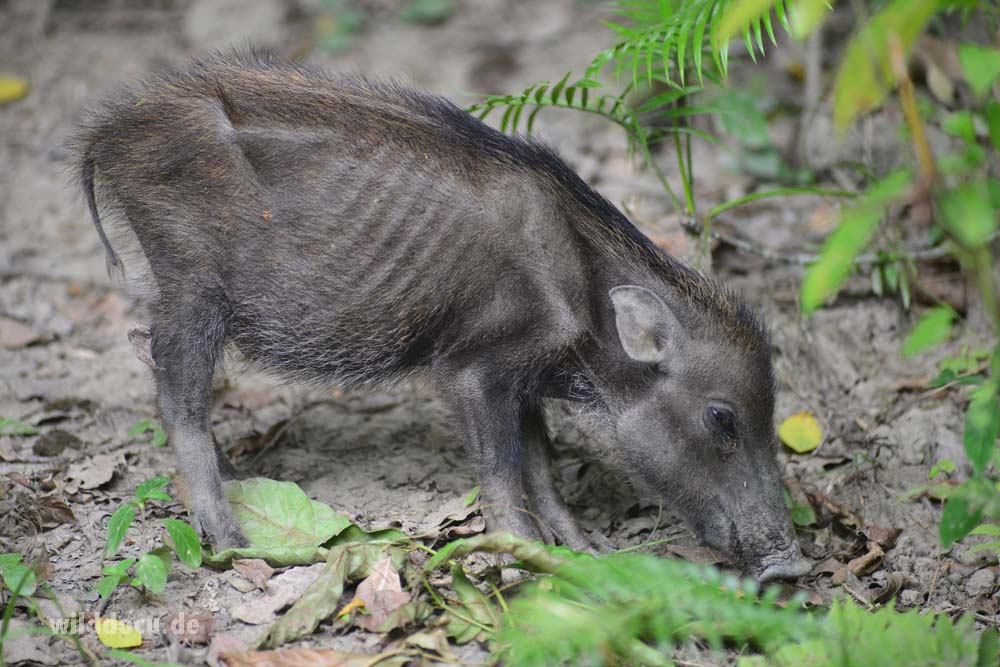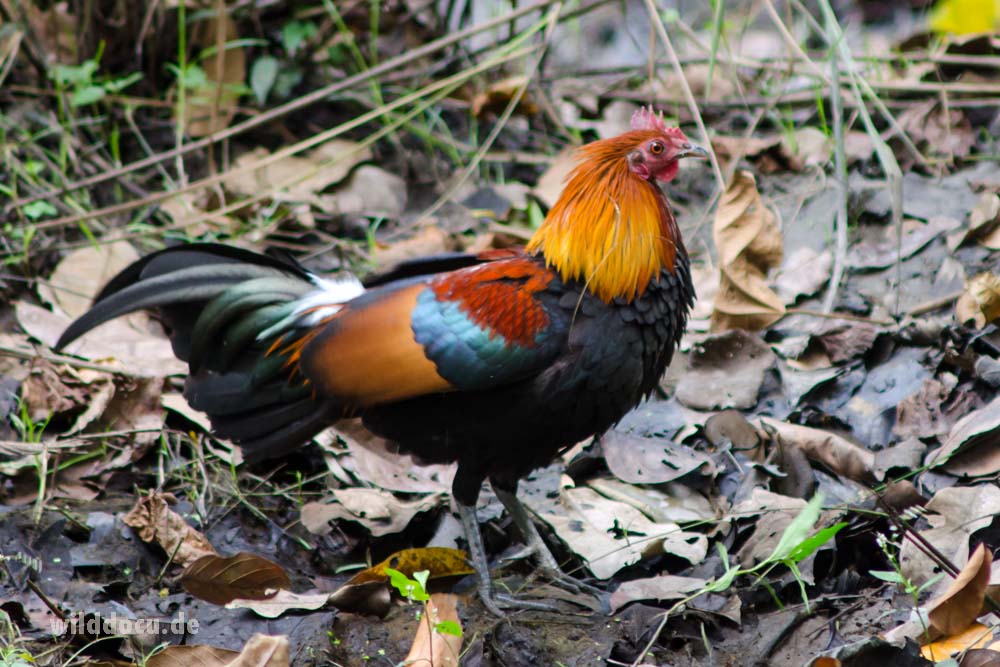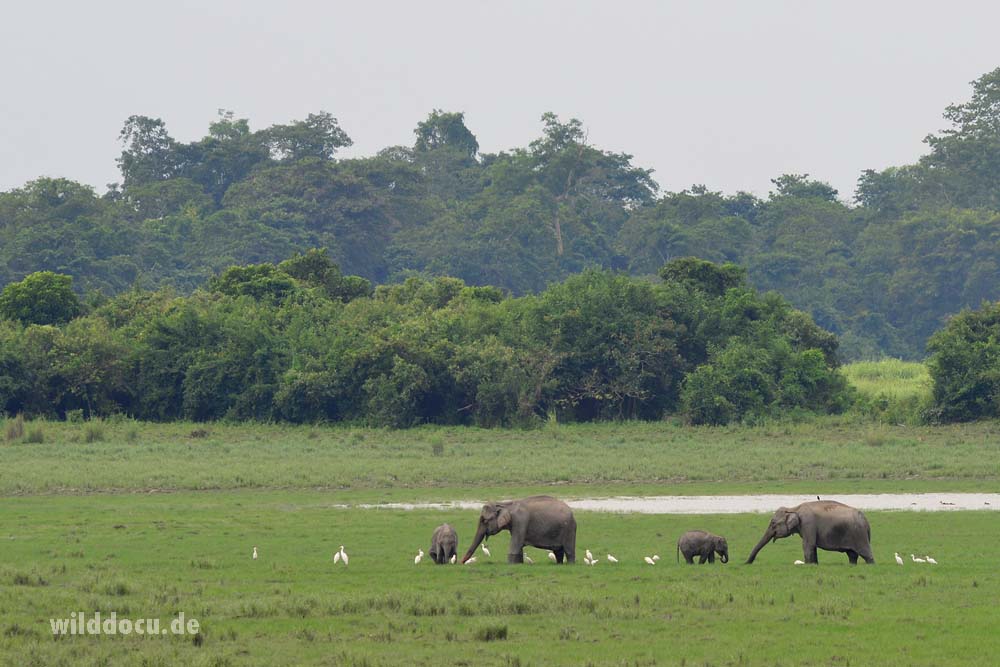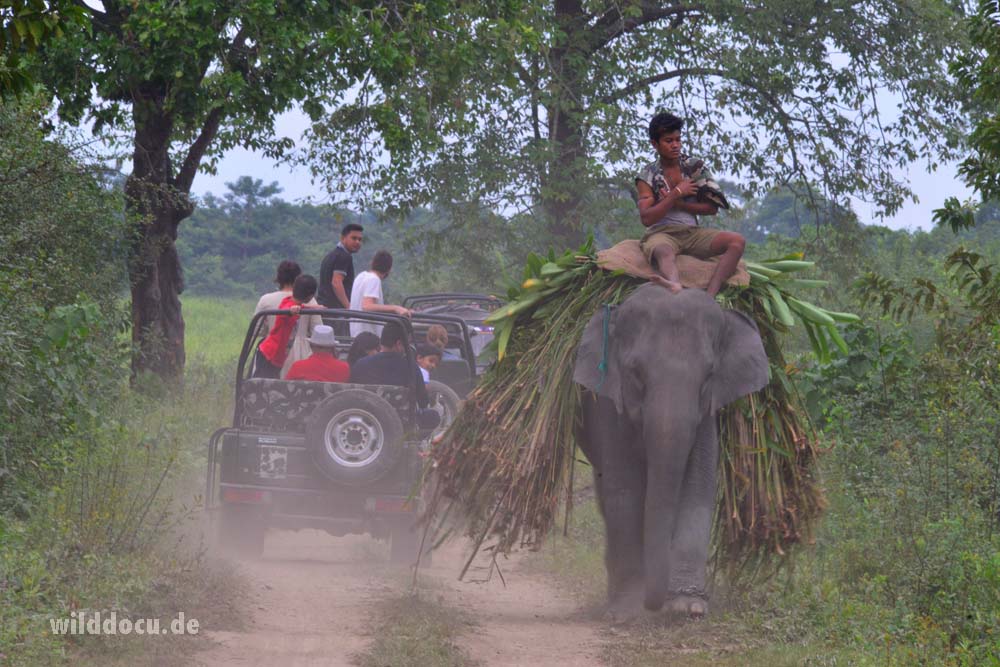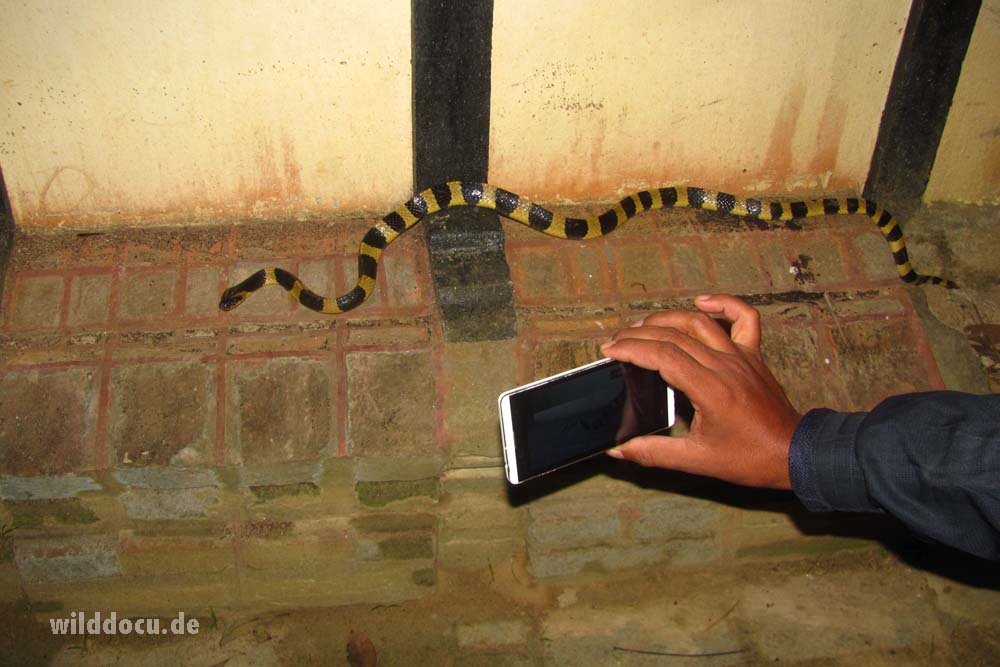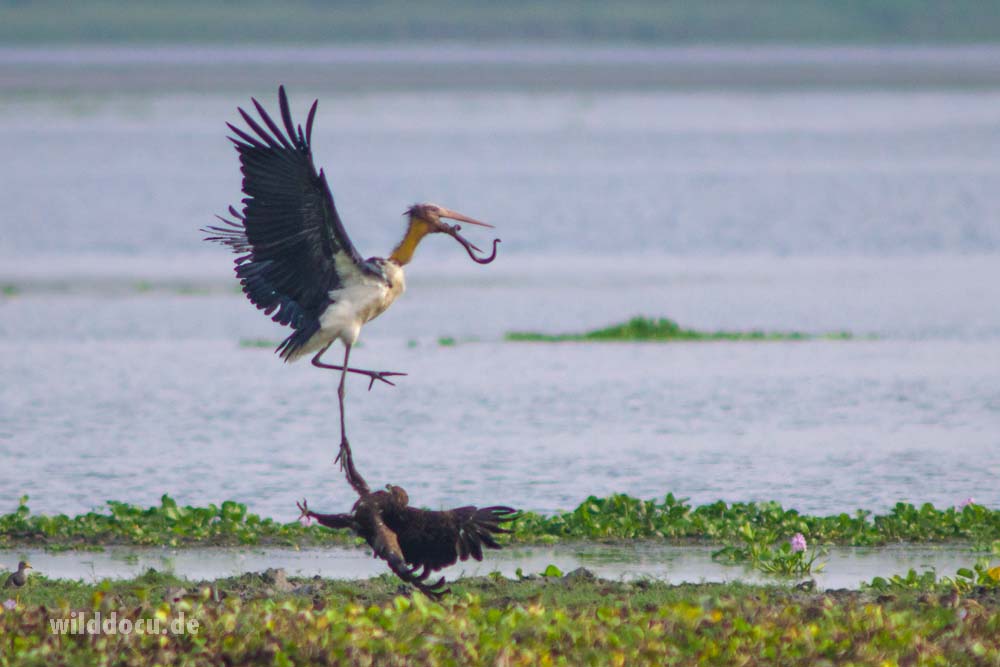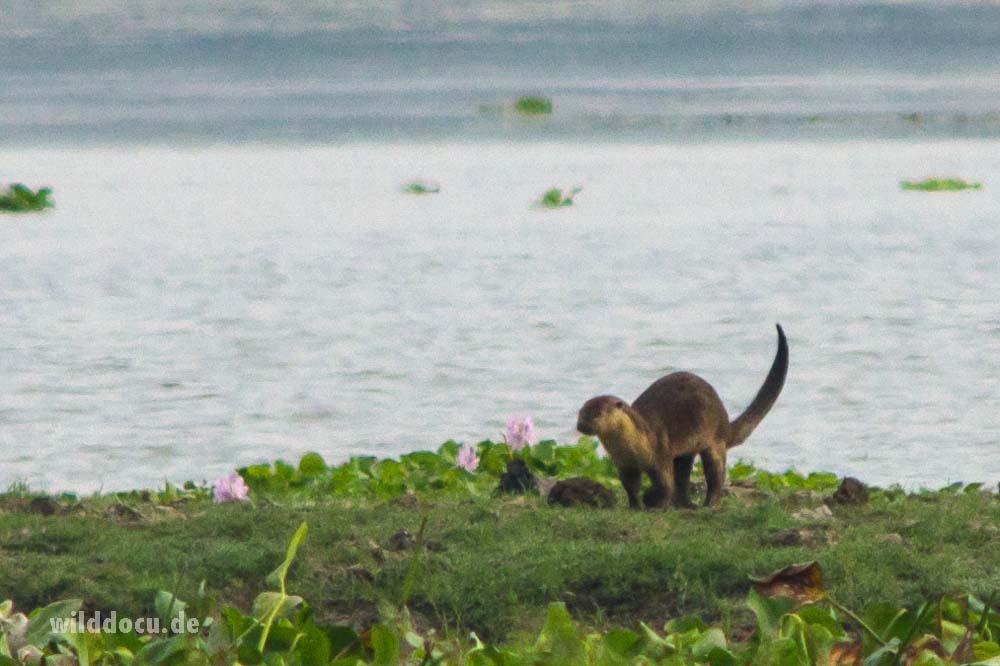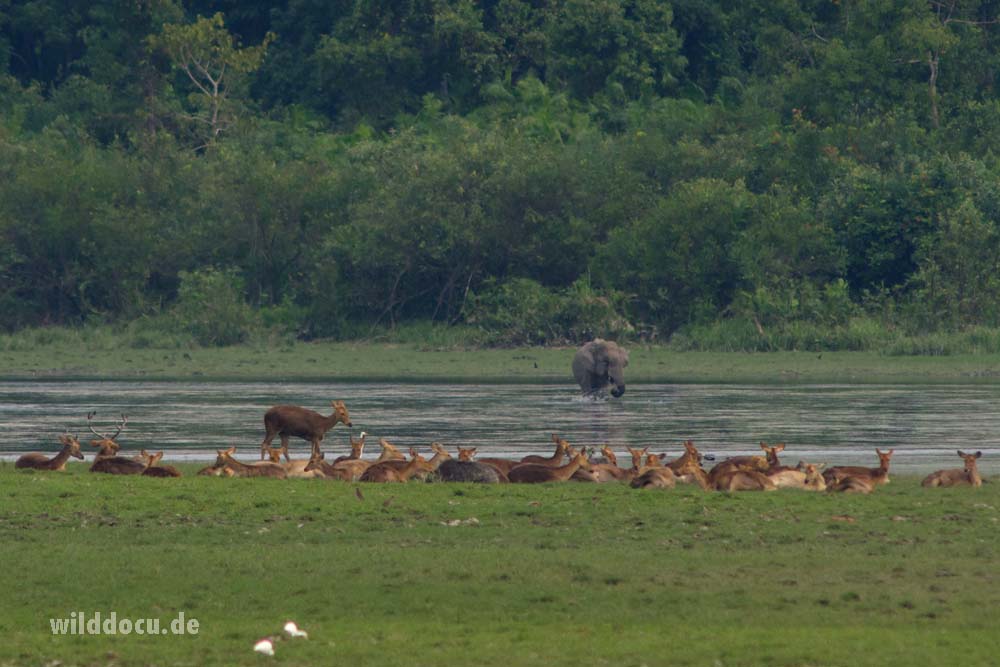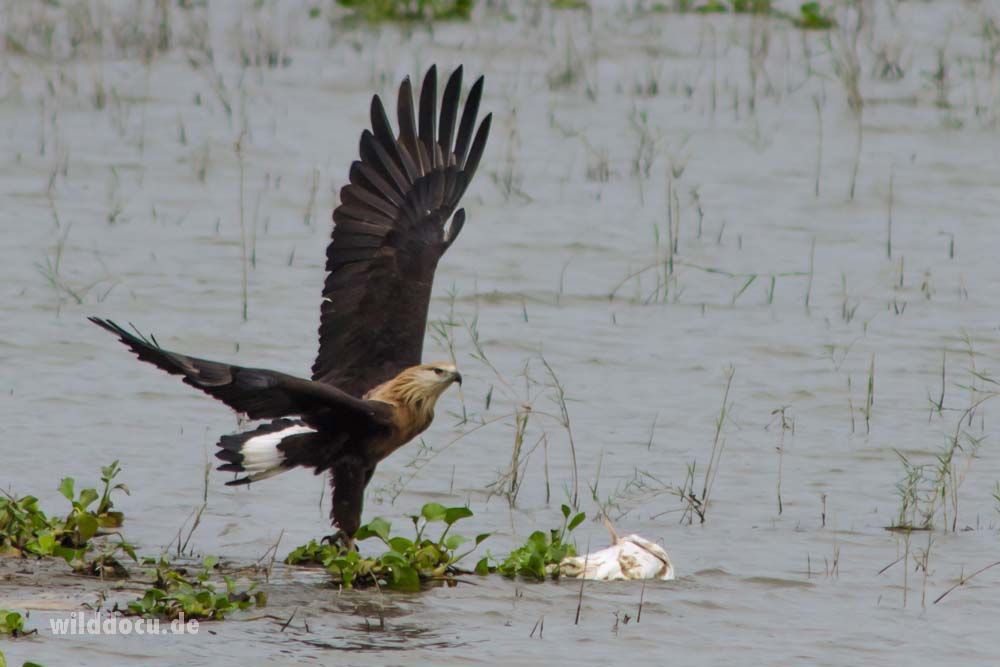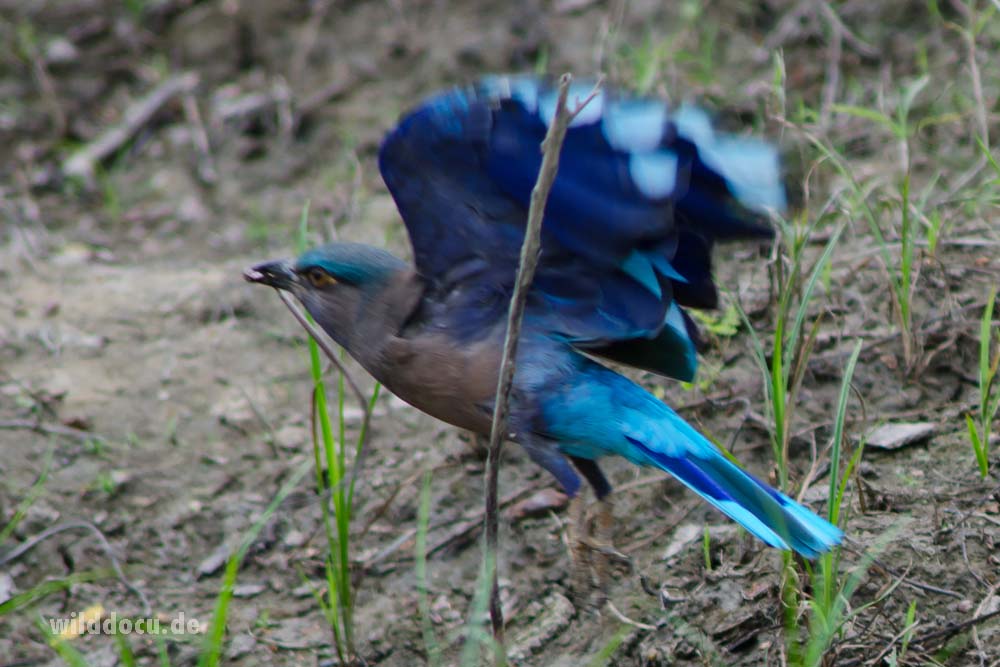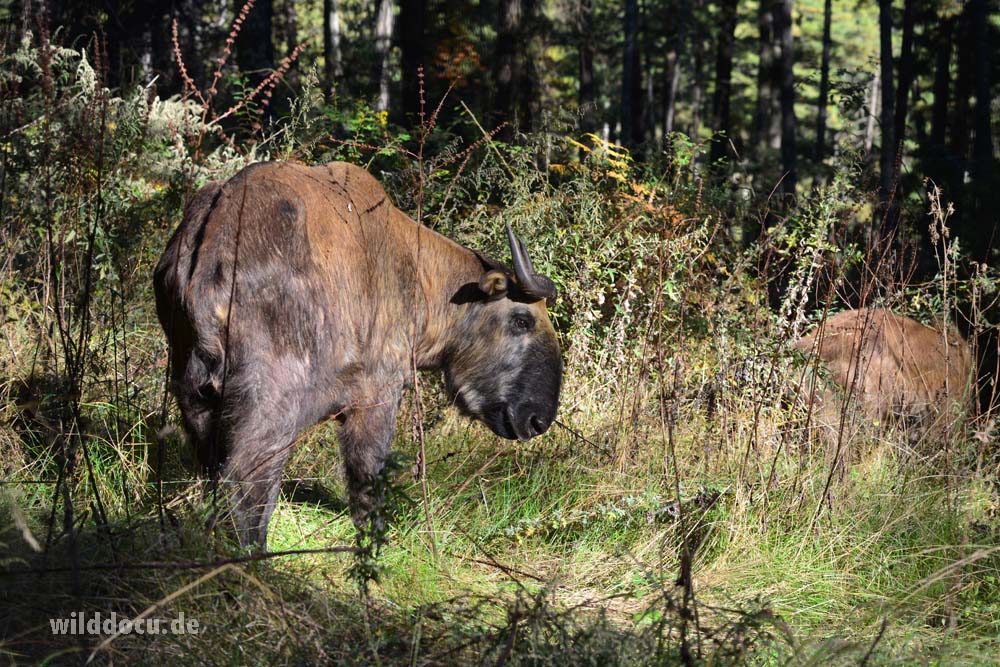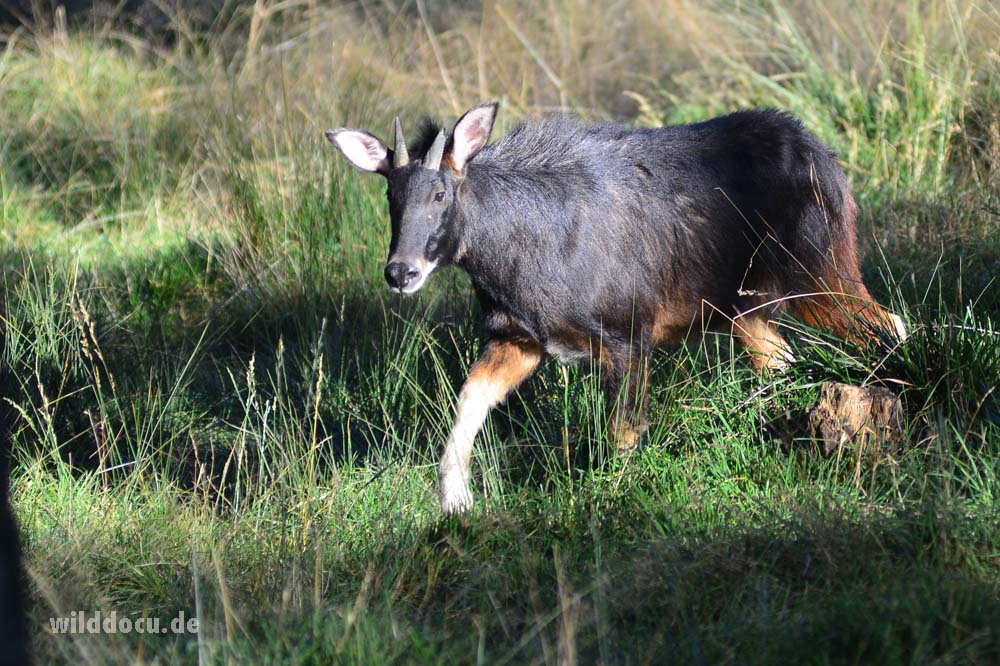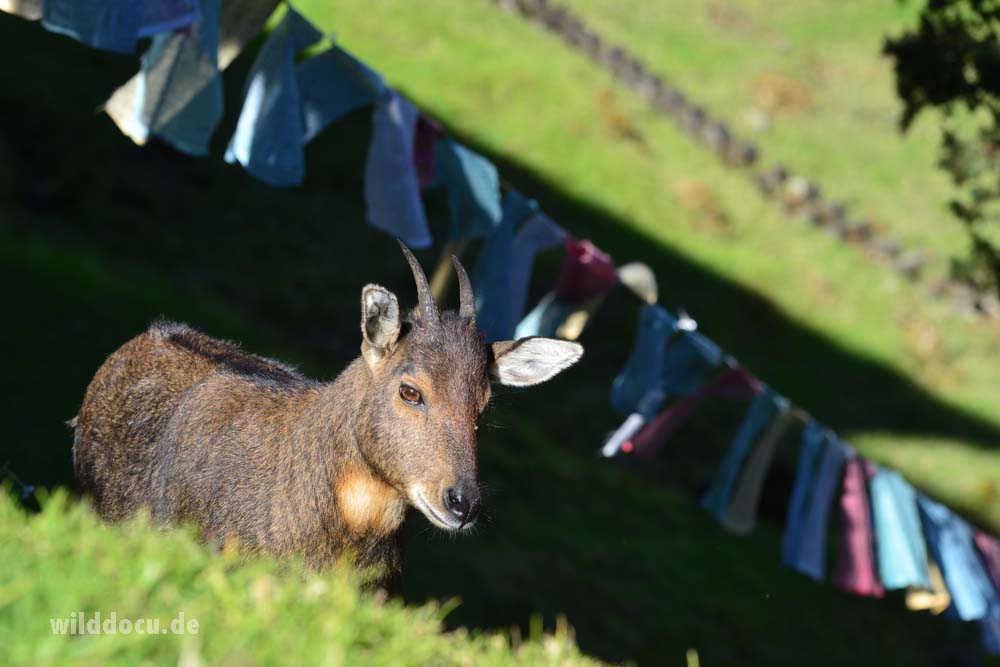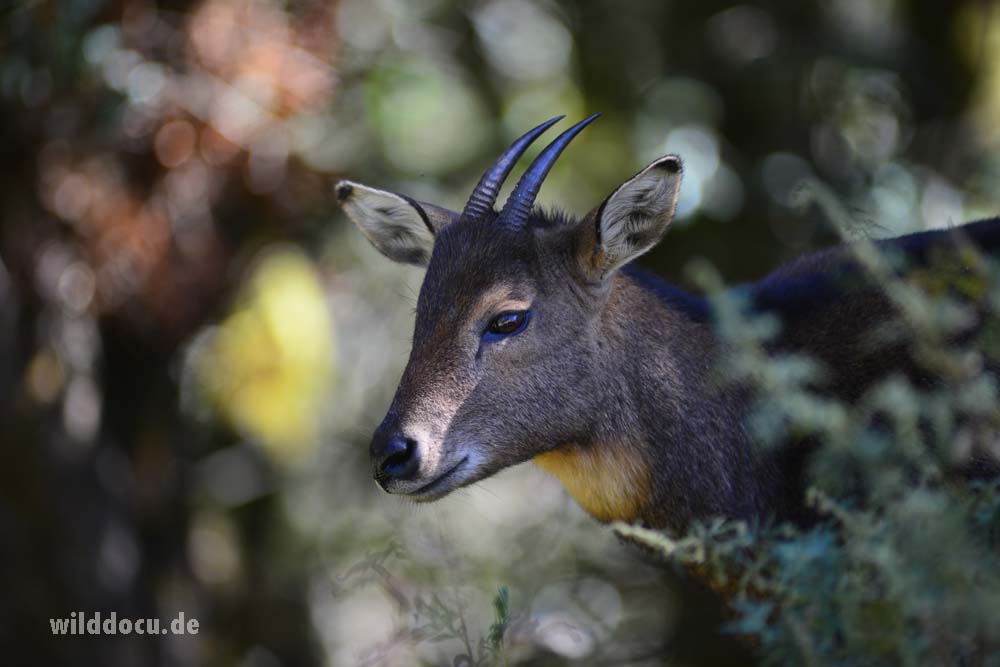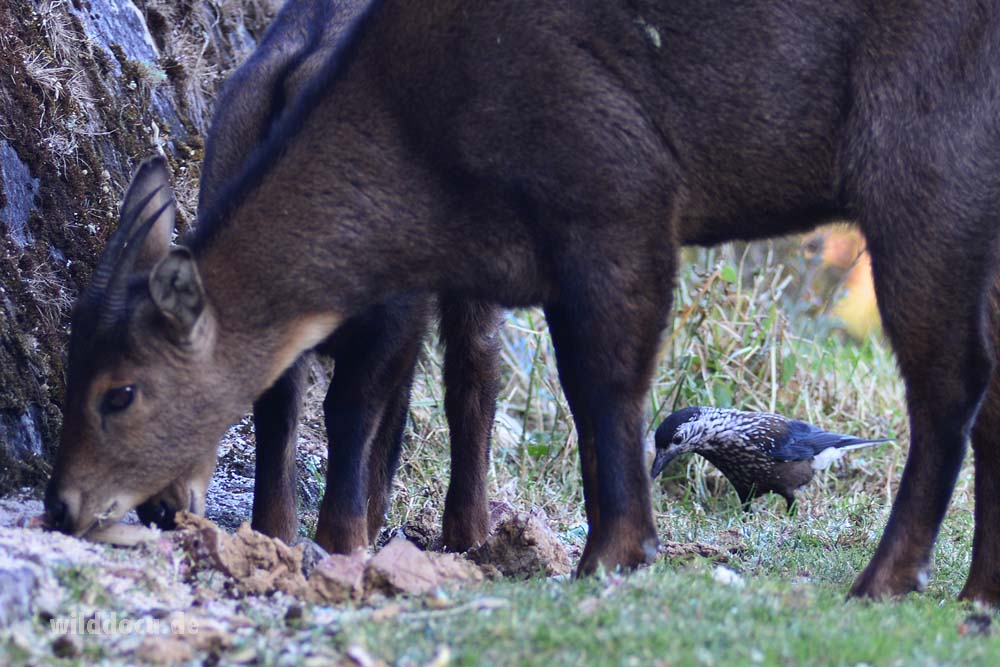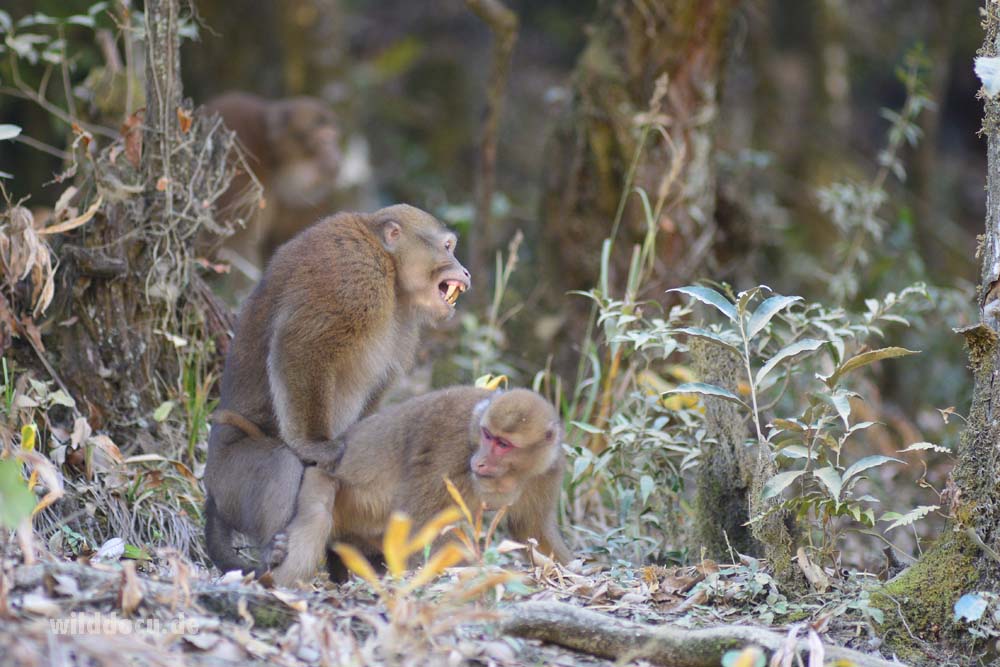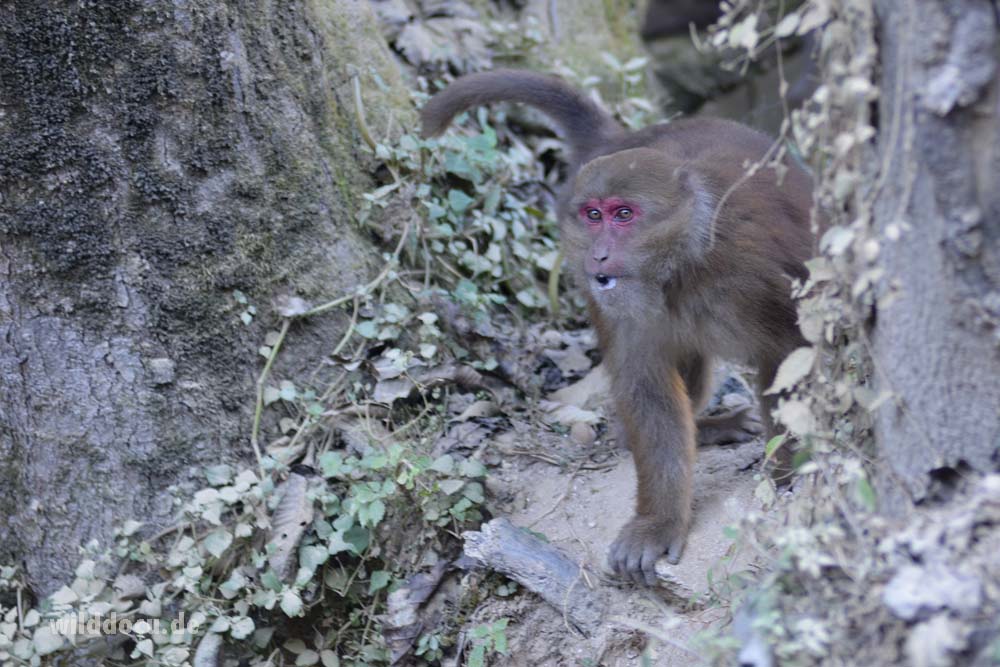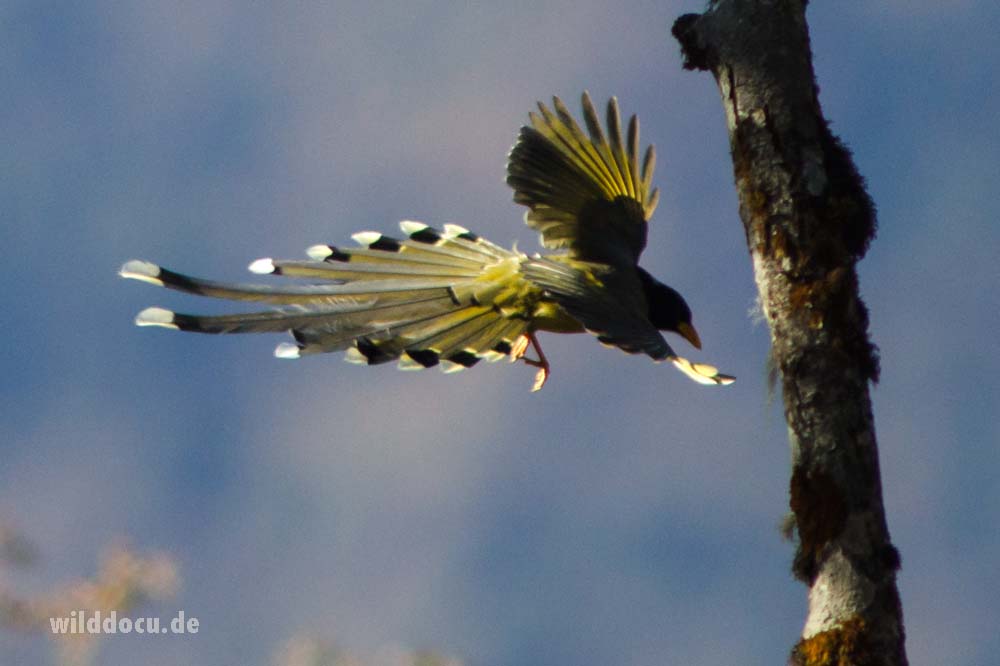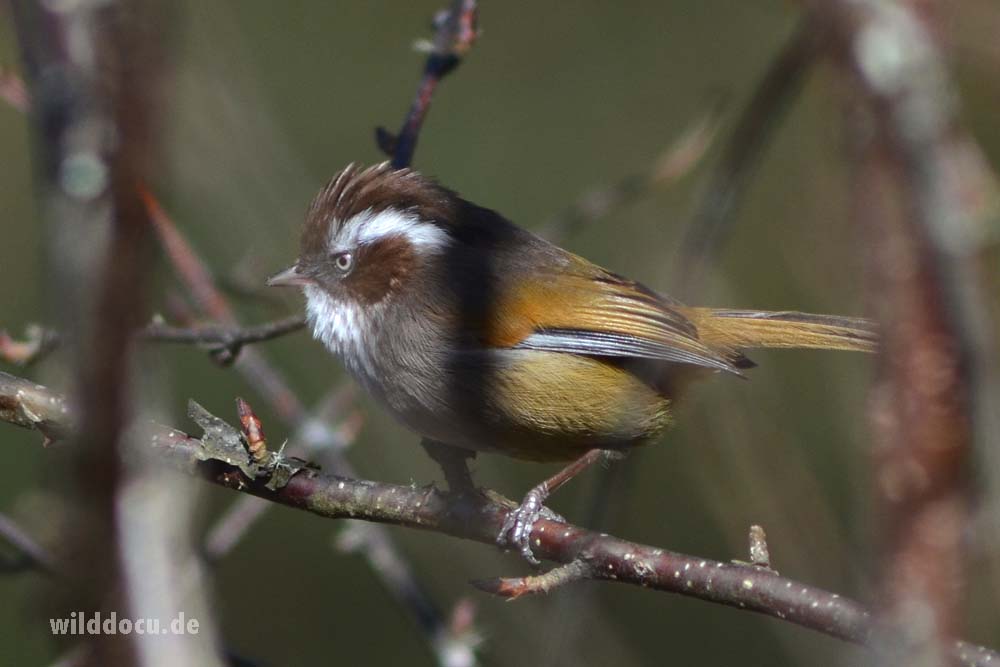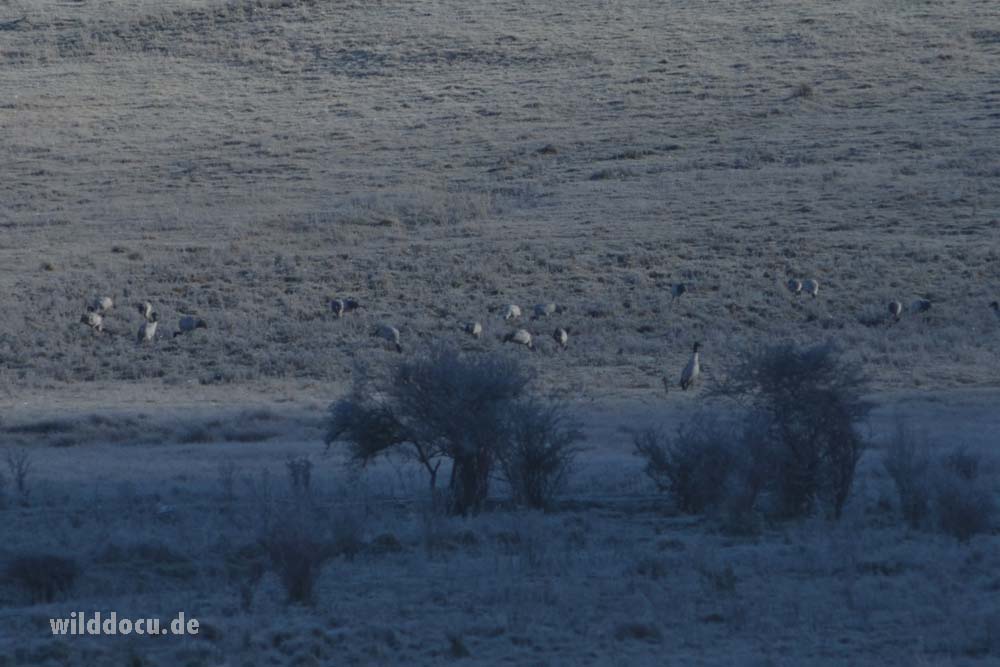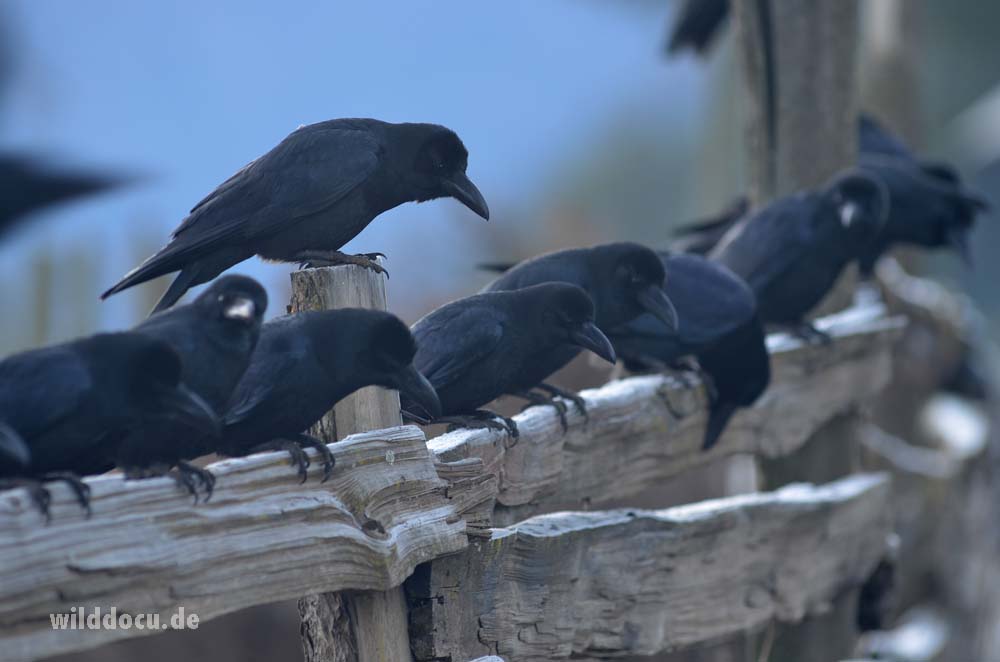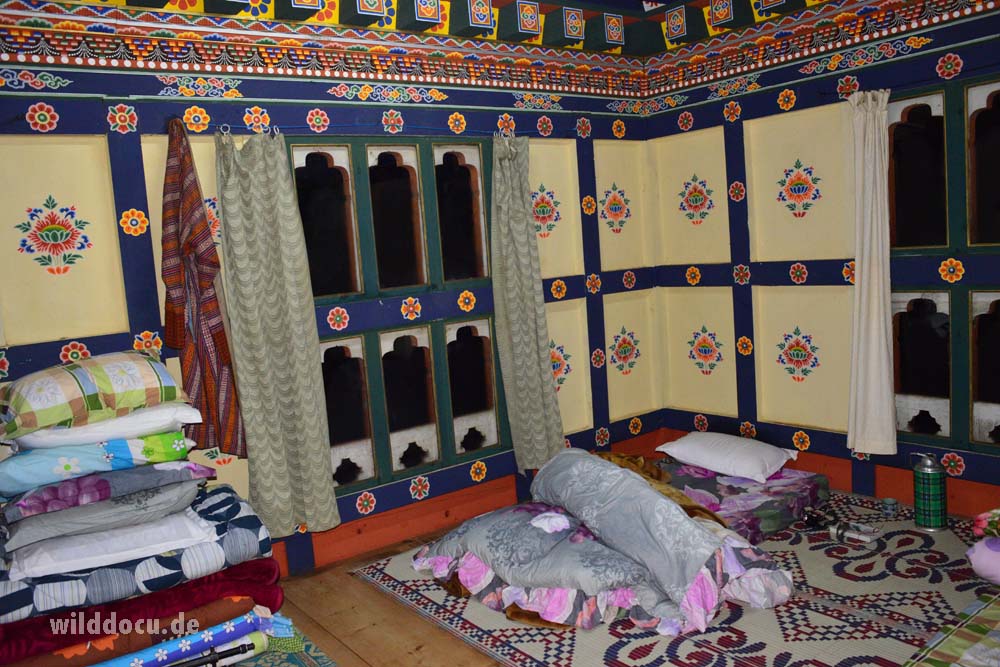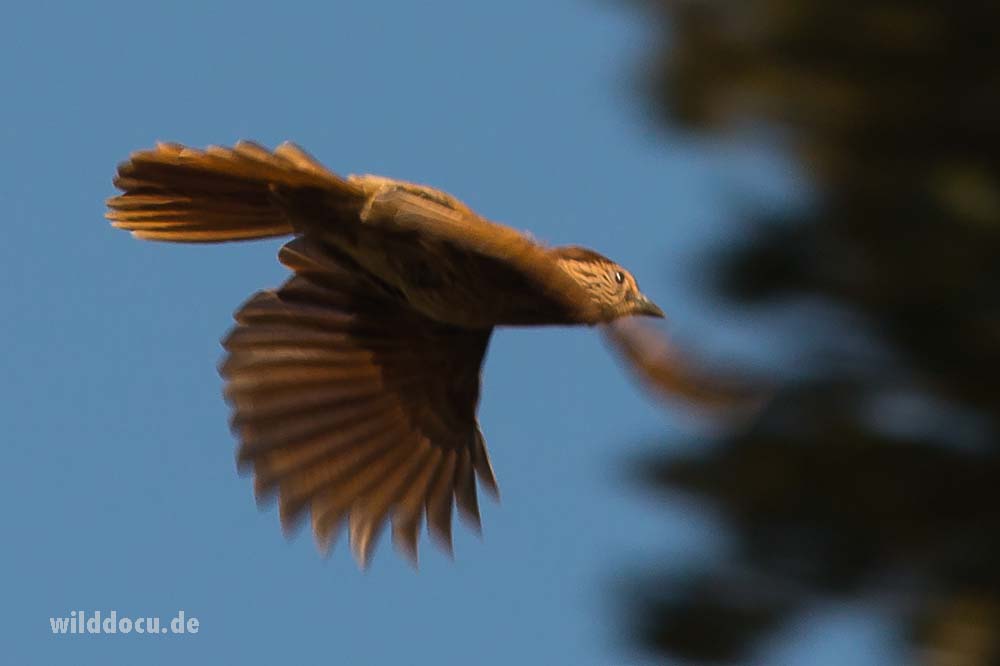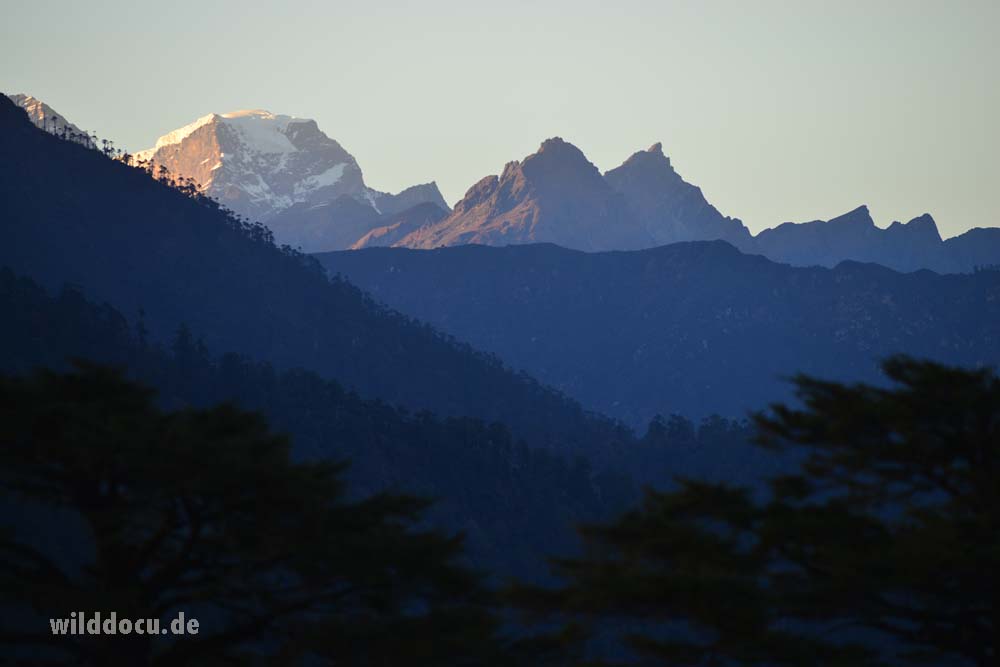It has been a dream for years to visit Kaziranga Nationalpark. Pobitora and Hoollongapar Gibbon Sanctuary in India and finally Bhutan were equally on my wish list.
Summary
Duration of trip: october 27th to november 12th, 2016 – 17 days
Weather: always sunny, comfortably warm, mornings in the mountains (Buthan) with rime
Free ranging wild mammal species seen – total within 17 days: 20
| Asian Elephant | (Elephas maximus) | Asiatischer Elefant |
| Asiatic Wild Buffalo | (Bubalus arnee) | Wasserbüffel |
| Assamese Macaque | (Macaca assamensis) | Assam-Makak |
| Barasingha, Swamp Deer | (Cervus duvaucelii) | Barasingha |
| Brown Himalayan Goral | (Naemorhedus goral goral) | Osthimalaya Goral |
| Capped Langur | (Trachypithecus pileatus) | Kappenlangur |
| Greater one-horned Rhino | (Rhinoceros unicornis) | Panzernashorn |
| Himalayan Striped Squirrel | (Tamiops macclellandi) | Himalaya-Streifenhörnchen |
| Hoary-bellied Himalayan Squirrel | (Callosciurus pygerythrus) | Irawadi-Hörnchen |
| Hog Deer | (Axis porcinus) | Schweinshirsch |
| Hoolock Gibbon | (Bunopithecus hoolock) | Weißbrauengibbon |
| Indian Muntjac | (Muntiacus muntjak) | Indischer Muntjak |
| Malayan Giant Squirrel |
(Ratufa bicolor) |
Schwarzes Riesenhörnchen |
| Northern Pig-tailed Macaque | (Macaca leonina) | Nördlicher Schweinsaffe |
| Pallas’s Squirrel | (Callosciurus erythraeus) | Pallashörnchen |
| Pika | (Ochotona sp.) | Pika / Pfeifhase |
| Rhesus Macaque | (Macaca mulatta) | Rhesusaffe |
| Small Indian Mongoose | (Herpestes javanicus) | Kleiner Mungo |
| Smoth-coated Otter | (Lutrogale perspicillata) | Weichfellotter |
| Wild Pig | (Sus scrofa) | Wildschwein |
Itinerary
Friday, October 28th 2016
I arrive early in the afternoon at Guwahati Airport. The plan is to visit Guwahati Zoo the next day. But after around 11 hours travelling and some busy days prior departure, I want to reward myself and be surrounded by nature. Therefore I choose to travel another two hours by car and eventually arrive at Maibong Resort on the edge of Pobitora Wildlife Refuge.
Pobitora Wildlife Sanctuary is about 48 km by road from Guwahati. Reportedly it has the densest population of the Great Indian one-horned Rhinoceros in the world: almost 100 animals per 38.8 square kilometres – though only 16 km² is effective rhino habitat. Besides rhinoceros other reported animals are Leopard, Wild Boar, Barking Deer, Wild Buffalo etc.
I had made a reservation with Nipen Nath, the owner of Maibong Resort. After a quick checkin and moving into a lovely Cottage, one of the staff offers me a motorcycle ride to the edge of the reserve. This is quite a challenge with my tripod, camera and a 600 mm lens on one shoulder. But me and the lense even survive the potholes and I am happy about the straightforward indian way of setting one’s hand to a task. We follow Pobitora Road in southwesterly direction for only a kilometer or two. The road leads over a dam with agricultural land to the right and the reserve to the left. I am overwhelmed with the first impressions.
There is a small group of wild buffaloes crossing through the tall grass. I see birds allover: waterfowl gathering adjacent to the numerous waterbodies, Green Bee-Eaters and Indian Roller on the wires, Chestnut-Tailed starlings in the trees, Asian Openbills flying over … and, and, and. The highlight of the afternoon is the boisterous meeting of three rhinos. To me it looks as if a mother tries to prevent a male to get closer to her calf. Anyway: The Greater one-horned Rhinoceros for me represents the creature from primeval times – just by the look of it. When you hear it, this impression is even intensified. I am happy!
Saturday, October 29th 2016
I start at 5 am and walk down the road that I drove last night. I do not get to see more mammals, but my bird list gets longer and longer …
After breakfast I meet with my guide and driver. We go back to Guwahati, where we spend the whole day to work on my caprinae world project. I can recommend the Assam state zoo even to those who express reservations about zoos. The park itself is spacious, green, with lots of big trees. Many enclosures are spacious too. I observe quite a few free ranging mammals and birds that I do not see again on this trip like Indian Muntjac, Small Indian Mongoose, Hoary-bellied Himalayan Squirrel, Black-crowned Night Heron and Rufous Treepie.
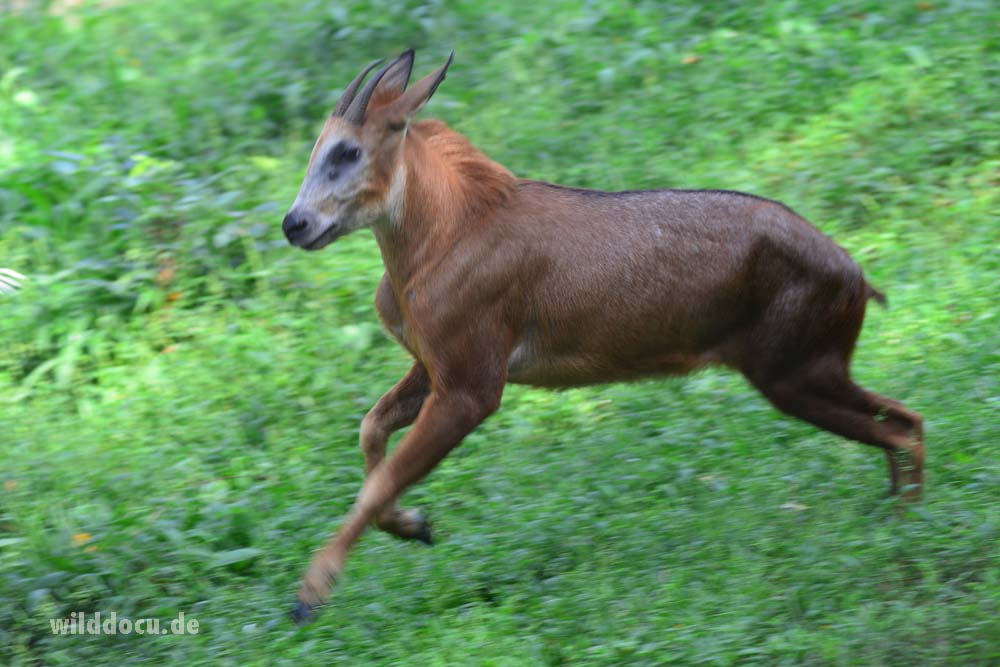
The „Assamese Red Serow“ at Guwahati zoo, a yet undescribed subspecies/species. The „true“ Red Serow (Capricornis rubidus) has hairs with a black base. The Hair of the Assamese Red Serow ist white at the base.
In the evening we drive back to Pobitora and I am invited to celebrate Divali with some local people in the garden, where my cottage is. Candels enlighten the garden. Women sing and dance – and are not deterred by the hundreds of crackers that are fired by the boys of the nearby village. Later the police passes by, two cars with blue lights switched on. I think, how humorous the Indian police is! To accompany the festivities with the means they have at hand … The next day I am told that two poachers were shot in an attempt to kill a rhino …
Sunday, October 30th 2016
With the first light I go on a jeep safari for an hour or two. We drive very close to a rhino mum with her kid which forces the two to nervously stand up … The passage through a forest produces a single wild boar, but no more birds. Unfortunately I can not convince my driver to defer office work until later. He is constantly on the phone, which restricts somehow the nature experience. After the drive I conclude: Another walk on the dam would have been more satisfying.
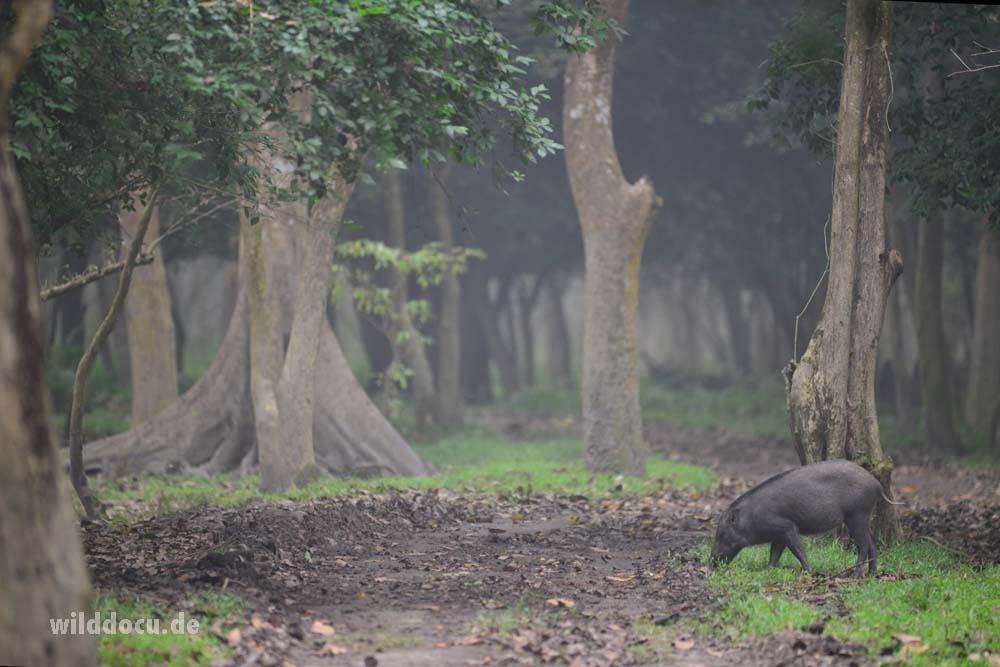
A single wild boar (Sus scrufa) in the forest section of Pobitora Sanctuary. Reportedly locals are allowed to cut firewood and drive livestock into the woods.
It’s 260 kilometers to Dimapur. We need the whole day to get there. On the one hand I am surprised to see vast stretches of timber along the road, but on the other hand it makes me sad to see no wildlife at all and hardly a bird. I guess this is, what is called „empty forest syndrome“. In Dimapur I embark at „De Oriental Dream“. It is not exactly a dream, but a clean place in this otherwise dusty and noisy town – and they serve cold beer in the restaurant.
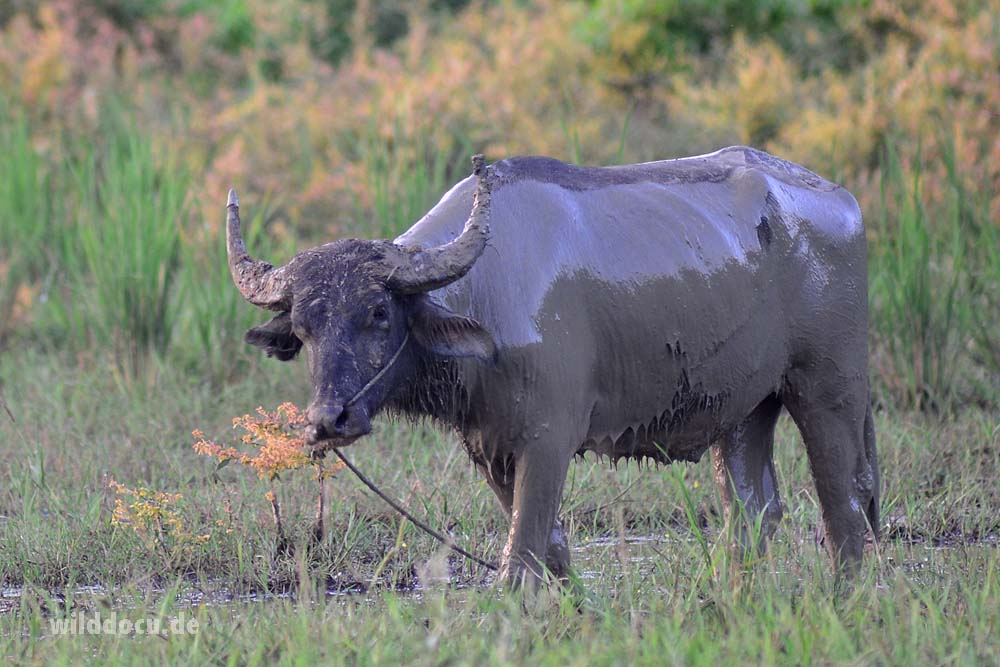
Domesticated buffalo: Note the much smaller horns compared to the wild form (see „Kaziranga“ chapter)
Monday, October 31st, 2016
I visit Nagaland Zoological Park. I also recommend this zoo, again for it’s free ranging animals: For example I see Capped Langur and Pied Hornbill.
Tuesday, November 1st, 2016
The plan is to proceed to Imphal and Loktak Lake, the only place in the world to see wild Manipur Brow-antlered Deer. But the plan fails.
The closer we drive to the Nagaland-Manipur border, the more army presence you find. There are soldiers patrouling in pairs alongside the road, each pair being only a few 100 meteres apart. I also notice that my guides become uneasy. They don’t feel comfortable in a region, where the locals were headhunters until the 1960ies, where several insurgent armed groups seek indepependence from India or fight eachother. No wildlife whatsoever.
Around noon we reach the border. My guides tell me not to talk to anybody. An official waves us near his office. He tells us that the road will be blocked for around 24 hours. I don’t have to think twice, my schedule is very tight. If we waited we would eventually loose time at more productive sites. So we turn, make a brief stop at the Nagaland State Museum in Kohima and proceed to Hoollongapar Gibbon Sanctuary, where we arrive after sunset and get a room in the forest guest house.
Wednesday, November 2nd, 2016
We start early for a forest walk. Accompanied by forest officer Heremba Bhuyan and armed guide Pintumedhi. Pintumedhi tells us that he had seen a leopard at 4:30 am 500 m from the buildings. Pity! I probably missed it by 15 minutes. The vegetation in the forest is very dense, so all the ground-dwelling animals can only be detected, when they cross the paths. That way leopards in Gibbon Sancturay are seen 4 to 6 times a year. According to the guides there are no tigers in the sanctuary.
The walk is very productive. Within a few hours before breakfast we see Northern Pig-tailed Macaque, Capped Langur, Rhesus Macaque, Hoolock Gibbon, Himalayan Striped Squirrel, Malayan Giant Squirrel, and a Pallas’s Squirrel.
After breakfast I have to realise that somebody else had breakfast too. While still sitting on a chair something wobbles down my shank. I look down and see a leech fully soaked with my blood on the floor. Good, that I notice that now, so I can prepare for the next trip. I get myself organised, wash some clothes and are ready for an eventing-/night walk. I love the atmosphere especially at night. My flashlight illuminates the forest. We hear cicadas and geckos, but see only once eyeshine. The vegetation is so dense that we fail to find out what is behind those eyes. I was hoping for a Slow Lori. But no luck!
Thursday, November 3rd, 2016
The next morning we start on the trail that we had already walked the day before. After about half an hour the path befurcates. We first walk the stretch to the left. It is partially overgrown and has wet sections. I have pulled up my light colored socks over the trousers. Every 50 meters or so it is necessary to stop and check for leeches. At each stop I flip off 10 to 15 of them. I had not expected that much during the dry season. We reach the railway track that also passes by the forest guest house. There is a metal construction that should function as a bridge for the monkeys to cross from one side of the sanctuary to the other. But apparently it does not work since locals have cut off the ropes that connect the monkey bridge to the surronding trees. Gibbons are said to not come down to the ground.
We go back and try the other trail – only to run into some elephants that are heared in the bush. I remember Jon Hall’s 2008 Assam Trip Report writing about his elephant experiences at Hoollongapar Gibbon Sanctuary: „… rather too close for comfort“.
Pintumedhi tells me that one of his other jobs is to chase elephants back into the forest during harvest time. The elephants then try to leave the sanctuary and forage on the field products. A shot with a rifle in the air usually is enough to impress the big animals. Based on this experience forest guards take at least one rifle with them when they guide tourists.
We get one more chance to get close to Gibbons. This time its a small familiy with mum and dad and a young. And they are very noisy. I don’t know if they are excited because of our presence, but they actually do not sound frightened and you hear Gibbons calling in the sancturary quite often several times during the day (but usually from far distances). So let’s call it a „concert“. And I have to say: This concert is so far my most impressive encounter with primates! And I can even fully enjoy it, since they are louder than my guides talking on their smartphones!! And even better: The guides watch me recording the Gibbon calls and start having fun doing the same with their phones.
Within 4 hours we are at Kaziranga National Park. I stay at Wild Grass Resort, a true Safari Lodge with a big rambling garden, a high ceiling dining room and excellent food.
Friday, November 4th, 2016
I take the 5am elephant ride in the central section. I can’t believe how busy it is at this time of the day. But I am prepared for other people and enjoy watching them: the mother who bottle-feeds her toddler on the back of the elephant or the mahouts who steer their elephants with their naked feet and make them pose with their trunks curled up. Also the alpenglow in the Himalayas is great (or should it be Himalaya glow?). Oh yes, and there is wildlife on the way: Hog Deer, Baransinghas, Rhinos. Although I prefer wildlife watching in peace, I would do the elephant ride again.
I drive the rest of the morning through the central part, and stay the afternoon in the western section. There is wildlife everywhere: Asian Elephants, Baransinghas, Asiatic Wild Buffalos, Greater one-horned Rhinos, Hog Deer and Wild Boar. In terms of birds I get most of the birds I already saw at Pobitora. And on top of that there is new species like the Asian Barred Owlet, White Rumped Shama and one of my favourites: Red Junglefowl.
In the evening, coming back to the lodge, I am still hyped. Talking to my guide Jintu I do not pay much attention to the surrounding. But there! Just 50 centimeters from my left foot something moves. Something yellow. „A snake“, I shout. And indeed, In the light of my flashlight and the light of Jintu’s smartphone we marvel at a Banded Krait.
Later I read: „A clinical toxicology study gives an untreated mortality rate of 1to10 percent, which may be because when bites do occur, the rate of envenomation when biting defensively is thought to be very low.“ The book of Indian Reptiles and Amphibians says: „A bullock struck by it (Banded Krait) is reported to have died in about 20 minutes after being bitten.“
I guess once bitten, you have to hope the Krait has not mistaken you for a bullock. Apart from that it does not really calm you down when you realise that the gap between the door of your cottage and the floor matches the diameter of a Banded Krait …
Saturday, November 5th, 2016
I go to the eastern sector of the park this morning. For whatever reason the safaris do start only at 7:30 pm. The eastern part is supposedly very good for birds and especially raptors like Pallas Fisheagle, Serpent Crested Eagle and Osprey. I get one more mammal species on my list: an otter.
According to different sources (Kaziranga NP, WWF India and Vivek Menon: Field Guide to Indian Mammals) there are all three Indian otter species living at Kaziranga NP: Eurasian Otter, Smooth-coated Otter, Small-clawed Otter
I can observe and photograph one specimen. I am pretty far away to make a proper identification, but because of the smooth, chocolate-brown coat, the lighter underside and because it’s active by day, I believe it is a Smooth-coated Otter.
In the afternoon there is also a chance for tiger, but I have to leave by noon for Guwahati.
Sunday, November 6th, 2016 – first day in Bhutan
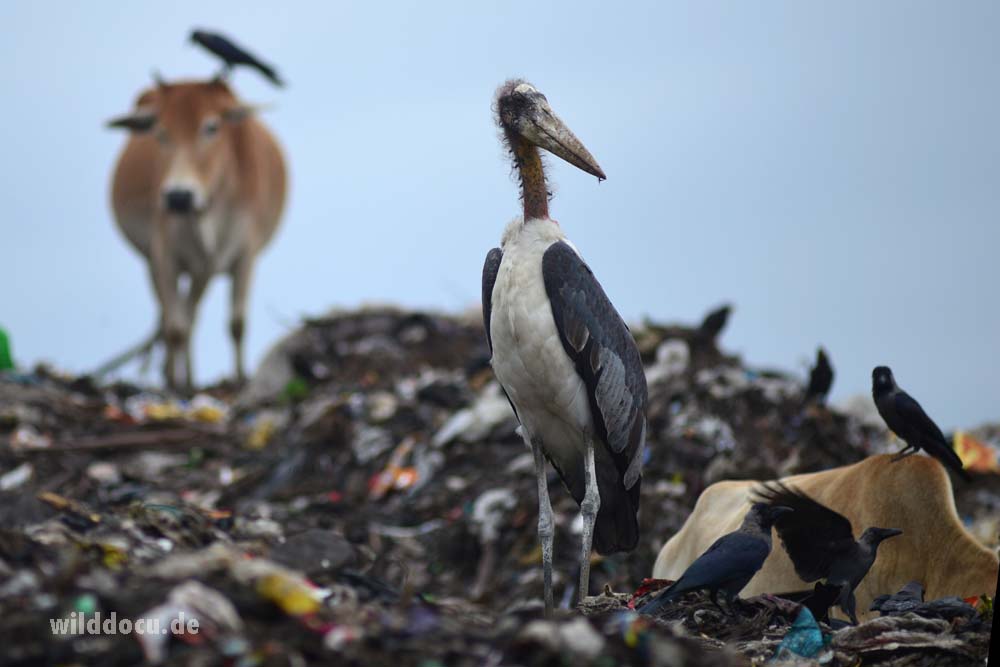
Just before my flight goes to Bhutan I manage to visit the Guwahati dump for half an hour – apparently the best site to see the endangered Greater Adjutant (Leptoptilos dubious), Großer Adjutant. What a strange mix of misery, biomass, poverty and the art of adaption. A good place to learn about nature – provided you know how to convince your taxi driver not to flee from stench just after arrival!
Next country: promising Bhutan
According to IUCN, Bhutan is viewed as a model for proactive conservation initiatives. Furthermore the Kingdom has received international acclaim for its commitment to maintain its biodiversity. This is reflected in the decision to:
– maintain at least 60 percent of the land under forest cover
– designate more than 40 percent of its territory as national parks and other protected areas
– identify a further 9 percent of land area as biodiversity corridors linking the protected areas.
The government also aims to promote conservation as part of its plan to target Gross National Happiness.
I arrive at Paro Airport/Bhutan and go straight to the Motithang Preserve near Thimphu to continuo work on my caprinae world project. Motithang Preserve is the only zoo in the world with Bhutan Takin and Himalayan Serow. East-Himalayan Goral, Muntjac and Sambar they keep too.
Monday, November 7th, 2016
We spend the whole day at Cheri monastery. My companions are Sangay – my guide – and Kuenga – the driver. To my knowledge Cheri monastery is the only place in the world, where a sighting of a wild Himalayan Brown Goral – the eastern subspecies of the Himalayan Goral – is guaranteed. And sure enough, after about half an hour walk to the base of the monastery, I see my first Brown Gorals. It’s late in the morning and most animals rest under some trees. Later in the afternoon around 20 of them move onto the meadow infront of the main building complex.

You would have a hard time to find the gorals in the forest. At Cheri monastery a sighting is guaranteed – at least in november.
I guess the reason why people so far seem not to pay much attention to these fantastic beasts at Cheri monastery is that they behave like domestic animals. During my photography I sometimes could have touched them by stretching my arm. And there is also domestic goats and sheep at the monastery, which build mixed herds with the gorals on the meadow. There is probably several reasons why the gorals stay at the monastery:
- The meadow provides good, easily accessible fodder.
- The monks dispose sacrifices like tsampa (a mix of roasted flour and salted butter tea) and cookies before they decay by just throwing them over the walls of the monastery. Gorals and Spotted Nutcrackers are happy customers.
- The monks tell us that there is Leopards and Himalayan Black Bears in the area. Therefore it could be advantageous for the gorals to stay close to humans. Predators might be reluctant to come that close.
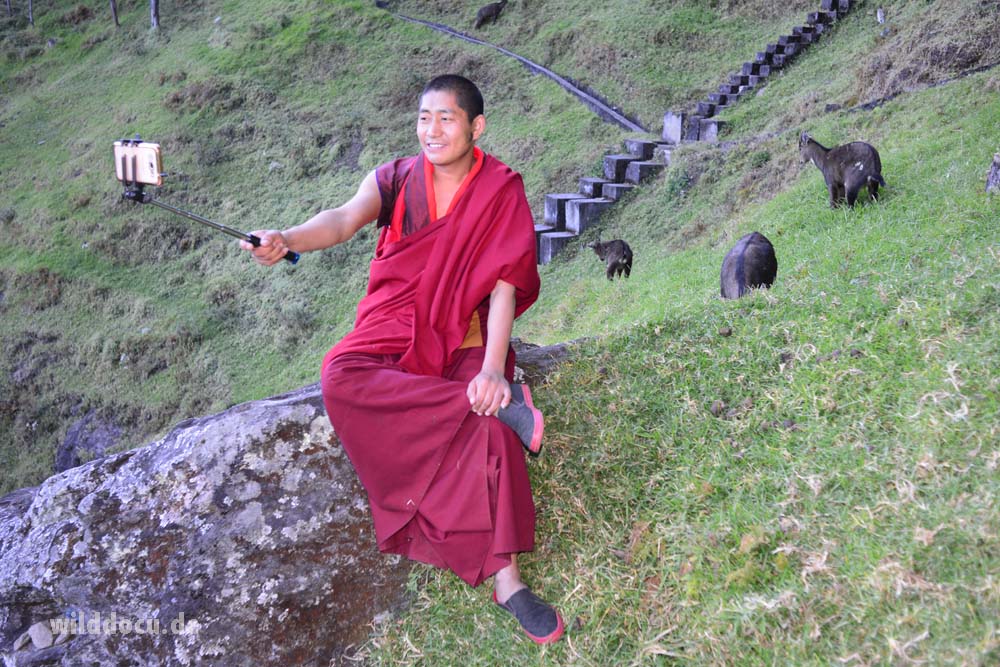
A testimony of the good Bhutanese humor: The monks could just not understand, why I would take pictures of „their“ gorals all day. So they started making fun of me. Eventually one of them hoaxed me by making selfies with the gorals. Never was Cheri monastery more in danger of collapsing through an earthquake caused by laughing monks (not in the picture). 😉
Tuesday, November 8th, 2016
I spend another day at the Motithang Preserve to get good photos of Takin and Serow. The only free-ranging wild mammal species I see is a Himalayan Striped Squirrel.
Wednesday, November 9th, 2016
We drive from Thimphu to Pele La Pass via Dochula Pass (3050 m) and Punakha. Almost the whole stretch in under construction. The only mammals we see is a group of Assamese Macaque. Close to Pele La Pass is an abandoned road that is famous for its pheasants. Serows have been seen here too – the main reason for me to come here. But we are not very lucky. Locals flush the forests to collect Rhododendron leaves, that they use for litter. We hope that it gets quiter after we have passed them, but instead we find out that construction workers have opened a quarry further down the road. I search the gullies for serow, but the only mammal I see is a pika.
Others have seen pikas here too. Jon Hall – on his trip in 2008 – thinks his pika from Pele La is a Royle’s Pika, but he is not sure. Jeff Blincow identifies a pika from Pele La on his 2013 trip as Moupin Pika. I have not much time to identify „my“ pika. I can only say that it is small compared to, let’s say, Ladakh Pika (which I know, but which does not occur in Bhutan). It is not lightcoloured like Plateau Pika. The surrounding habitat, Rhododendron forest, and the elevation fits for both, Royle’s Pika and Moupin Pika. So I better leave the ID of this one open.
We wait until sunset and then walk back. Again I check the gullies with my flashlight: but no eye shine of wild animals is detected. The plan was to come here again early in the morning, but we reckon it is not worth it. You can just hope that the whole situation calmes down once the road construction has terminated. We drive to Phobjikha, where we overnight at a homestay.
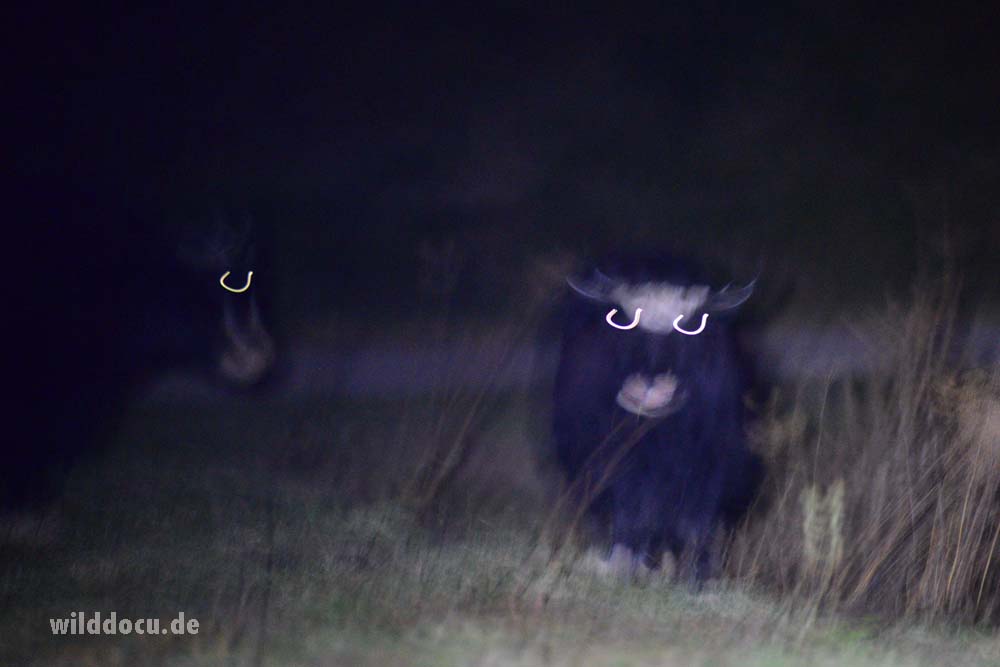
During the day Sangay tells me about the Devine Madman, Drukpa Kunley, a buddhist saint, who was known for his crazy methods of enlightening, loving beer and sex. He stands for combining vitality and spirituality. So when we spotlight this creature, it is instantly clear that we face him … eventually he turns out to be a domestic yak.
Thursday, November 10th, 2016
Phobjikha Valley is famous for it’s Black-necked Cranes. It is the most important wintering habitat in Bhutan. Due to conservation work the numbers have risen from around 100 in the end of the 1980s to 457 in the winter of 2015/16. I visit the local Crance information center, where I obtain these figures. Also noteworthy: Leopards visit the valley at night and prey on the cranes.
We stay at Yanka’s house, a local carpenter. I am keen on his house which he just finished after eight years of building. Yanka got help from 7 to 8 people from the village; it cost him 5000 Dollar. He gets 35 Dollars for having me overnight. This seems fair and I believe that ecotourism can improve the situation of people who are envolved.
Michal Polanski writes in his 2010-trip report: „Road building is to be blamed for worst damages in Bhutanese environment. … Rocks and debris is pulled down the slopes destroying hundreds of hectares of vegetation …“ I don’t see it that way. The road building is not the actual problem. The impact is comparable to a landslide or a fire: the forest is destroyed on a comparatively small scale. But at the same time new, more open habitat is created. Biodiversity can even be enhanced.
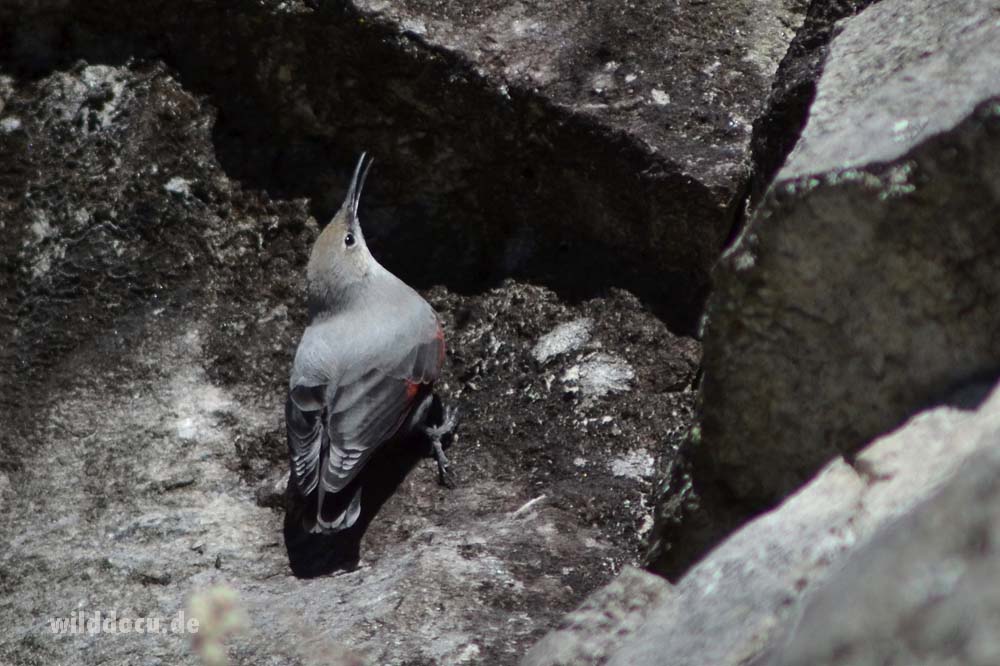
The Wallcreeper (Tichodroma muraria), Mauerläufer, is attracted by the steep cliffs, that are created through road construction.
The real problem is the people, who use the roads. Even though the Punakha-Pele La-Highway is not a new road (it is broadened from one- to two lane), it will contribute to make remote areas of the country more accessible (of course this is what roads are made for, but at the same time the loss of remoteness is what many virgin forest species threatens).
Then again, as I pointed out already: Bhutan has a number of progressive environmental policies. On the other hand the country needs development. Let’s hope, they find a good compromise.
Sources
Daniel, J. C.: The Book of Indian Reptiles and Amphibians. Bombay Natural History Society / Oxford University Press, 2002
Grimmet, R.; Inskipp, C.; Inskipp, T.: Pocket Guide to the Birds of the Indian Subcontinent. Oxford University Press, 2001
Menon, Vivek: Field Guide to Indian mammals. A&C Black Puplishers, London, 2009
Smith, Andrew T. and Xie, Yan: A Guide to the mammals of China. Princeton University Press, 2008
http://mammalwatching.com/Oriental/Otherreports/MP%20Bhutan%20field%20report%202010.pdf
http://mammalwatching.com/Oriental/Otherreports/JB%20Bhutan%202013.pdf
http://maps.iucnredlist.org/map.html?id=41261
https://en.wikipedia.org/wiki/Bhutan#cite_note-BTF2-49
www.wwfindia.org/about_wwf/priority_species/threatened_species/smooth_coated_otter/
Species lists by locations
Mammals seen at Pobitora Wildlife Sanctuary on October 28th and 29th within ca. 10 h: 3 species
| Asiatic Wild Buffalo | (Bubalus arnee) | Wasserbüffel |
| Great. one-horned Rhino. | (Rhinoceros unicornis) | Panzernashorn |
| Wild Pig | (Sus scrofa) | Wildschwein |
Birds seen at Pobitora Wildlife Sanctuary on October 28th and 29th within ca. 10 h: 40 species
| Adjutant, Lesser | (Leptoptilos javanicus) | Kleiner Adjutant |
| Asian Openbill | (Anastomus oscitans) | Silberklaffschnabel |
| Barbet, Lineated | (Megalaima lineata) | Streifenbartvogel |
| Bee-Eater, Green | (Merops orientalis) | Smaragdspint |
| Bulbul, Red-vented | (Pycnonotus cafer) | Rußbülbül |
| Cormorant, Indian | (Phalacrocorax fuscicollis) | Braunwangenscharbe |
| Darter | (Anhinga melanogaster) | Schlangenhalsvogel |
| Drongo, Black | (Dicrurus macrocercus) | Königsdrongo |
| Dove, Red-collared | (Streptopelia tranquebarica) | Weinrote Halsringtaube |
| Dove, Spotted | (Spilopelia chinensis) | Perlhalstaube |
| Egret, Cattle | (Bubulcus ibis) | Kuhreiher |
| Egret, Great | (Ardea alba) | Silberreiher |
| Flameback, Black-rumped | (Dinopium benghalense) | Goldrückenspecht |
| Grassbird, Striated? | (Megalurus palustris) | Strichelkopf-Schilfsteiger |
| Heron, Indian Pond | (Ardeola grayii) | Paddyreiher |
| Jacana, Bronze-winged | (Metopidius indicus) | Hindublatthühnchen |
| Kingfisher, Common | (Alcedo atthis) | Eisvogel |
| Kingfisher, Storkbilled | (Pelargopsis capensis) | Storchschnabelliest |
| Kingfisher, White-Breasted | (Halcyon smyrnensis) | Braunliest |
| Lapwing, Red-Wattled | (Vanellus indicus) | Rotlappenkiebitz |
| Myna, Common | (Acridotheres tristis) | Hirtenmaina |
| Myna, White-vented | (Acridotheres javanicus) | Bleichrückenmaina |
| Oriol, Black-hooded | (Oriolus xanthornus) | Schwarzkopfpirol |
| Pipit, Paddyfield? | (Anthus rufulus) | Orientspornpieper |
| Prinia, Plain? | (Prinia inornata) | (Name nicht verfügbar) |
| Robin, Oriental Magpie | (Copsychus saularis) | Dajaldrossel |
| Roller, Indian | (Coracias benghalensis) | Hinduracke |
| Sandpiper, Green | (Tringa ochropus) | Waldwasserläufer |
| Shrike, Brown | (Lanius cristatus) | Braunwürger |
| Sparrow, House | (Passer domesticus) | Haussperling |
| Starling, Asian Pied | (Gracupica contra) | Elsterstar |
| Starling, Chestnut-tailed | (Sturnia malabarica) | Graukopfstar |
| Stonechat, Common | (Saxicola torquata) | Schwarzkehlchen |
| Stork, Black-necked | (Ephippiorhynchus asiaticus) | Riesenstorch |
| Swallow, Barn | (Hirundo rustica) | Rauchschwalbe |
| Wagtail, White | (Motacilla alba) | Bachstelze |
| Warbler, Dusky? | (Phylloscopus fuscatus) | Dunkellaubsänger |
| Waterhen, White-breasted | (Amaurornis phoenicurus) | Weißbrust-Kielralle |
| Whistling-Duck, Fulvous? | (Dendrocygna bicolor) | Gelbe Pfeifgans |
| Whistling-Duck, Lesser? | (Dendrocygna javanica) | Zwergpfeifgans |
Free ranging birds seen at Assam State Zoo, Guwahati on October 29th: 7 species
| Adjutant, Lesser | (Leptoptilos javanicus) | Kleiner Adjutant |
| Black-crowned Night Heron | (Nycticorax nycticorax) | Nachtreiher |
| Black Kite | (Milvus migrans) | Schwarzmilan |
| Heron, Indian Pond | (Ardeola grayii) | Paddyreiher |
| House Crow | (Corvus splendens) | Glanzkrähe |
| Rufous Treepie | (Dendrocitta vagabunda) | Wanderbaumelster |
| Wagtail, White | (Motacilla alba) | Bachstelze |
Mammals seen at Hoollongapar Gibbon Sanctuary on November 2nd: 7 species
| Capped Langur | (Trachypithecus pileatus) | Kappenlangur |
| Himalayan Striped Squirrel | (Tamiops macclellandi) | Himalaya-Streifenhörnchen |
| Hoolock Gibbon | (Bunopithecus hoolock) | Weißbrauengibbon |
| Malayan Giant Squirrel | (Ratufa bicolor) | Schwarzes Riesenhörnchen |
| Northern Pig-tailed Macaque | (Macaca leonina) | Nördlicher Schweinsaffe |
| Rhesus Macaque | (Macaca mulatta) | Rhesusaffe |
| Pallas’s Squirrel | (Callosciurus erythraeus) | Pallashörnchen |
Birds seen at Hoollongapar Gibbon Sanctuary on November 2nd and 3rd: 11 species
| Barbet, Lineated | (Megalaima lineata) | Streifenbartvogel |
| Crow, House | (Corvus splendens) | Glanzkrähe |
| Dove, Spotted | (Spilopelia chinensis) | Perlhalstaube |
| Drongo, Greater Racket-tailed? | (Dicrurus paradiseus) | Flaggendrongo |
| Egret, Intermediate? | (Ardea intermedia) | Mittelreiher |
| Flowerpecker, Scarlet-backed? | (Dicaeum cruentatum) | Scharlachmistelfresser |
| Heron, Indian Pond | (Ardeola grayii) | Paddyreiher |
| Pheasant, Kalij | (Lophura leucomelanos) | Kali-Fasan |
| Warbler, Golden-spectacled | (Seicercus burkii) | Goldbrillen-Laubsänger |
| Warbler, Grey-cheeked | (Seicercus poliogenys) | Grauwangen-Laubsänger |
| Whistling Thrush, Blue | (Myophonus caeruleus) | Purpurpfeifdrossel |
Mammals seen at Kaziranga National Park on November 4th and 5th: 8 species
| Asian Elephant | (Elephas maximus) | Asiatischer Elefant |
| Asiatic Wild Buffalo | (Bubalus arnee) | Wasserbüffel |
| Barasingha, Swamp Deer | (Cervus duvaucelii) | Barasingha |
| Greater one-horned Rhino | (Rhinoceros unicornis) | Panzernashorn |
| Hog Deer | (Axis porcinus) | Schweinshirsch |
| Rhesus Macaque | (Macaca mulatta) | Rhesusaffe |
| Smoth-coated Otter | (Lutrogale perspicillata) | Weichfellotter |
| Wild Pig | (Sus scrofa) | Wildschwein |
Birds seen at Kaziranga National Park on November 4th and 5th: 47 species
| Adjutant, Lesser | (Leptoptilos javanicus) | Kleiner Adjutant |
| Asian Openbill | (Anastomus oscitans) | Silberklaffschnabel |
| Barbet, Lineated | (Megalaima lineata) | Streifenbartvogel |
| Bulbul, Red-vented | (Pycnonotus cafer) | Rußbülbül |
| Cormorant, Little | (Phalacrocorax niger) | Mohrenscharbe |
| Crow, Large-billed | (Corvus macrorhynchos) | Dickschnabelkrähe |
| Darter | (Anhinga melanogaster) | Schlangenhalsvogel |
| Dove, Oriental Turtle | (Streptopelia orientalis) | Orientturteltaube |
| Dove, Red-collared | (Streptopelia tranquebarica) | Weinrote Halsringtaube |
| Drongo, Ashy | (Dicrurus leucophaeus) | Graudrongo |
| Duck, Spott-billed | (Anas poecilorhyncha) | Fleckschnabelente |
| Egret, Cattle | (Bubulcus ibis) | Kuhreiher |
| Egret, Great | (Ardea alba) | Silberreiher |
| Egret, Intermediate | (Ardea intermedia) | Mittelreiher |
| Fish Eagle, Grey-headed | (Ichthyophaga ichthyaetus) | Graukopfseeadler |
| Fish Eagle, Pallas’s | (Haliaeetus leucoryphus) | Bindenseeadler |
| Goose, Bar-headed | (Anser indicus) | Streifengans |
| Heron, Grey | (Ardea cinerea) | Graureiher |
| Ibis, Black-headed | (Threskiornis melanocephalus) | Heiliger Ibis |
| Jacana, Bronze-winged | (Metopidius indicus) | Hindublatthühnchen |
| Jungle Fowl, Red | (Gallus gallus) | Bankivahuhn |
| Kingfisher, Common | (Alcedo atthis) | Eisvogel |
| Kingfisher, Storkbilled | (Pelargopsis capensis) | Storchschnabelliest |
| Kingfisher, White-Breasted | (Halcyon smyrnensis) | Braunliest |
| Lapwing, Grey-headed | (Vanellus cinereus) | Graukopfkiebitz |
| Lapwing, Red-Wattled | (Vanellus indicus) | Rotlappenkiebitz |
| Mallard | (Anas platyrhynchos) | Stockente |
| Myna, White-vented | (Acridotheres javanicus) | Bleichrückenmaina |
| Northern Pintail | (Anas acuta) | Spießente |
| Osprey | (Pandion haliaetus) | Fischadler |
| Owlet, Asian Barred | (Glaucidium cuculoides) | Kuckuckstrillerkauz |
| Parakeet, Alexandrine | (Psittacula eupatria) | Alexandersittich |
| Parakeet, Rose-ringed | (Psittacula krameri) | Halsbandsittich |
| Pelican, Spot-billed | (Pelecanus philippensis) | Graupelikan |
| Redshank | (Tringa totanus) | Rotschenkel |
| Roller, Indian | (Coracias benghalensis) | Hinduracke |
| Rufous Treepie | (Dendrocitta vagabunda) | Wanderbaumelster |
| Serpent Eagle, Crested | (Spilornis cheela) | Schlangenweihe |
| Shama, White-rumped | (Copsychus malabaricus) | Schamadrossel |
| Shelduck, Ruddy | (Tadorna ferruginea) | Rostgans |
| Shrike, Long-tailed | (Lanius schach tricolor) | Schachwürger |
| Starling, Asian Pied | (Gracupica contra) | Elsterstar |
| Stonechat, Common | (Saxicola torquata) | Schwarzkehlchen |
| Stork, Black-necked | (Ephippiorhynchus asiaticus) | Riesenstorch |
| Stork, Wooly-necked | (Ciconia episcopus) | Wollhalsstorch |
| Swallow, Barn | (Hirundo rustica) | Rauchschwalbe |
| Wagtail, White | (Motacilla alba) | Bachstelze |
Birds seen at Guwahati Dump on November 6th, 0,5 h: 3 species
| Adjutant, Greater | (Leptoptilos dubius) | Großer Adjutant |
| Crow, House | (Corvus splendens) | Glanzkrähe |
| Myna, Jungle | (Acridotheres fuscus) | Dschungelmaina |
Birds seen at Cheri Monastery, Buthan on November 7th: 6 species
| Blue Magpie, Yellow-billed | (Urocissa flavirostris) | Gelbschnabelkitta |
| Nutcracker, Spotted | (Nucifraga caryocatactes) | Tannenhäher |
| Pigeon, Snow | (Columba leuconota) | Schneetaube |
| Pigeon, Speckled Wood | (Columba hodgsonii) | Schwarzschnabel-Oliventaube |
| Redstart, Blue-fronted | (Phoenicurus frontalis) | Himalaya-Rotschwanz |
| Tit, Green-backed | (Parus monticolus) | Bergkohlmeise |
Birds seen at Phobjikha-Valley, Buthan on November 10th, 3h: 13 species
| Crane, Black-necked | (Grus nigricollis) | Schwarzhalskranich |
| Crow, Large-billed | (Corvus macrorhynchos) | Dickschnabelkrähe |
| Hoopoe | (Upupa epops) | Wiedehopf |
| Pipit, Olive-backed | (Anthus hodgsoni) | Waldpieper |
| Pipit, Red-throated? | (Anthus cervinus) | Rotkehlpieper |
| Redstart, Blue-fronted | (Phoenicurus frontalis) | Himalaya-Rotschwanz |
| Redstart, Hodgson’s | (Phoenicurus hodgsoni) | Feldrotschwanz |
| Shelduck, Ruddy | (Tadorna ferruginea) | Rostgans |
| Shrike, Grey-backed | (Lanius tephronotus) | Tibetwürger |
| Sparrow, Tree | (Passer montanus) | Feldsperling |
| Tit, Green-backed | (Parus monticolus) | Bergkohlmeise |
| Wagtail, White | (Motacilla alba) | Bachstelze |
| Whistling Thrush, Blue | (Myophonus caeruleus) | Purpurpfeifdrossel |
Birds seen alongside road Thimpu-Pelela-Thimpu, Buthan on November 9th and 10th: 20 species
| Blue Magpie, Yellow-billed | (Urocissa flavirostris) | Gelbschnabelkitta |
| Bulbul, Red-vented | (Pycnonotus cafer) | Rußbülbül |
| Bussard, Common | (Buteo buteo) | Mäusebussard |
| Crow, Large-billed | (Corvus macrorhynchos) | Dickschnabelkrähe |
| Eagle, Booted? | (Hieraaetus pennatus) | Zwergadler |
| Eagle, Steppe | (Aquila nipalensis) | Steppenadler |
| Fantail, White-throated | (Rhipidura albicollis) | Weißkehl-Fächerschwanz |
| Fulvetta, White-browed | (Fulvetta vinipectus) | Weißbrauen-Alcippe |
| Kingfisher, Pied | (Ceryle rudis) | Graufischer |
| Laughing Thrush, Striated | (Garrulax striatus) | Streifenhäherling |
| Nutcracker, Spotted | (Nucifraga caryocatactes) | Tannenhäher |
| Sibia, Rufous | (Heterophasia capistrata) | Schwarzkappentimalie |
| Sparrow, Russet | (Passer rutilans) | Rötelsperling |
| Tit, Coal | (Periparus ater) | Tannenmeise |
| Tit, Rufous-vented | (Periparus rubidiventris) | Rotbrustmeise |
| Wallcreeper | (Tichodroma muraria) | Mauerläufer |
| Water Redstart, White-capped | (Phoenicurus leucocephalus) | Weißkopf-Rotschwanz |
| Wren, Eurasian | (Troglodytes troglodytes) | Zaunkönig |
| Yuhina, Rufous vented | (Yuhina occipitalis) | Rotsteißyuhina |
| Yuhina, Whiskered | (Yuhina flavicollis) | Gelbnackenyuhina |
Birds species seen (total) – within 17 days: 108
| Barbet, Lineated | (Megalaima lineata) | Streifenbartvogel |
| Bee-Eater, Green | (Merops orientalis) | Smaragdspint |
| Blue Magpie, Yellow-billed | (Urocissa flavirostris) | Gelbschnabelkitta |
| Bulbul, Red-vented | (Pycnonotus cafer) | Rußbülbül |
| Bussard, Common | (Buteo buteo) | Mäusebussard |
| Cormorant, Indian | (Phalacrocorax fuscicollis) | Braunwangenscharbe |
| Cormorant, Little | (Phalacrocorax niger) | Mohrenscharbe |
| Crane, Black-necked | (Grus nigricollis) | Schwarzhalskranich |
| Crow, House | (Corvus splendens) | Glanzkrähe |
| Crow, Large-billed | (Corvus macrorhynchos) | Dickschnabelkrähe |
| Darter | (Anhinga melanogaster) | Schlangenhalsvogel |
| Dove, Oriental Turtle | (Streptopelia orientalis) | Orientturteltaube |
| Dove, Red-collared | (Streptopelia tranquebarica) | Weinrote Halsringtaube |
| Dove, Spotted | (Spilopelia chinensis) | Perlhalstaube |
| Drongo, Ashy | (Dicrurus leucophaeus) | Graudrongo |
| Drongo, Black | (Dicrurus macrocercus) | Königsdrongo |
| Drongo, Greater Racket-tailed? | (Dicrurus paradiseus) | Flaggendrongo |
| Duck, Spott-billed | (Anas poecilorhyncha) | Fleckschnabelente |
| Eagle, Booted? | (Hieraaetus pennatus) | Zwergadler |
| Eagle, Crested Serpent | (Spilornis cheela) | Schlangenweihe |
| Eagle, Grey-headed Fish | (Ichthyophaga ichthyaetus) | Graukopfseeadler |
| Eagle, Pallas’s Fish | (Haliaeetus leucoryphus) | Bindenseeadler |
| Eagle, Steppe | (Aquila nipalensis) | Steppenadler |
| Egret, Cattle | (Bubulcus ibis) | Kuhreiher |
| Egret, Great | (Ardea alba) | Silberreiher |
| Egret, Intermediate | (Ardea intermedia) | Mittelreiher |
| Fantail, White-throated | (Rhipidura albicollis) | Weißkehl-Fächerschwanz |
| Flameback, Black-rumped | (Dinopium benghalense) | Goldrückenspecht |
| Flowerpecker, Scarlet-backed? | (Dicaeum cruentatum) | Scharlachmistelfresser |
| Fulvetta, White-browed | (Fulvetta vinipectus) | Weißbrauen-Alcippe |
| Goose, Bar-headed | (Anser indicus) | Streifengans |
| Grassbird, Striated? | (Megalurus palustris) | Strichelkopf-Schilfsteiger |
| Heron, Black-crowned Night | (Nycticorax nycticorax) | Nachtreiher |
| Heron, Grey | (Ardea cinerea) | Graureiher |
| Heron, Indian Pond | (Ardeola grayii) | Paddyreiher |
| Hoopoe | (Upupa epops) | Wiedehopf |
| Hornbill, Oriental Pied | (Anthracoceros albirostris) | Orienthornvogel |
| Ibis, Black-headed | (Threskiornis melanocephalus) | Heiliger Ibis |
| Jacana, Bronze-winged | (Metopidius indicus) | Hindublatthühnchen |
| Jungle Fowl, Red | (Gallus gallus) | Bankivahuhn |
| Kingfisher, Common | (Alcedo atthis) | Eisvogel |
| Kingfisher, Pied | (Ceryle rudis) | Graufischer |
| Kingfisher, Storkbilled | (Pelargopsis capensis) | Storchschnabelliest |
| Kingfisher, White-Breasted | (Halcyon smyrnensis) | Braunliest |
| Kite, Black | (Milvus migrans) | Schwarzmilan |
| Lapwing, Grey-headed | (Vanellus cinereus) | Graukopfkiebitz |
| Lapwing, Red-Wattled | (Vanellus indicus) | Rotlappenkiebitz |
| Laughing Thrush, Striated | (Garrulax striatus) | Streifenhäherling |
| Mallard | (Anas platyrhynchos) | Stockente |
| Myna, Common | (Acridotheres tristis) | Hirtenmaina |
| Myna, Jungle | (Acridotheres fuscus) | Dschungelmaina |
| Myna, White-vented | (Acridotheres javanicus) | Bleichrückenmaina |
| Northern Pintail | (Anas acuta) | Spießente |
| Nutcracker, Spotted | (Nucifraga caryocatactes) | Tannenhäher |
| Oriol, Black-hooded | (Oriolus xanthornus) | Schwarzkopfpirol |
| Osprey | (Pandion haliaetus) | Fischadler |
| Owlet, Asian Barred | (Glaucidium cuculoides) | Kuckuckstrillerkauz |
| Parakeet, Alexandrine | (Psittacula eupatria) | Alexandersittich |
| Parakeet, Rose-ringed | (Psittacula krameri) | Halsbandsittich |
| Pelican, Spot-billed | (Pelecanus philippensis) | Graupelikan |
| Pheasant, Kalij | (Lophura leucomelanos) | Kali-Fasan |
| Pigeon, Snow | (Columba leuconota) | Schneetaube |
| Pigeon, Speckled Wood | (Columba hodgsonii) | Schwarzschnabel-Oliventaube |
| Pipit, Olive-backed | (Anthus hodgsoni) | Waldpieper |
| Pipit, Paddyfield? | (Anthus rufulus) | Orientspornpieper |
| Pipit, Red-throated? | (Anthus cervinus) | Rotkehlpieper |
| Prinia, Plain? | (Prinia inornata) | (kein dt. Name verfügbar) |
| Redshank | (Tringa totanus) | Rotschenkel |
| Redstart, Blue-fronted | (Phoenicurus frontalis) | Himalaya-Rotschwanz |
| Redstart, Hodgson’s | (Phoenicurus hodgsoni) | Feldrotschwanz |
| Robin, Oriental Magpie | (Copsychus saularis) | Dajaldrossel |
| Roller, Indian | (Coracias benghalensis) | Hinduracke |
| Rufous Treepie | (Dendrocitta vagabunda) | Wanderbaumelster |
| Sandpiper, Green | (Tringa ochropus) | Waldwasserläufer |
| Shama, White-rumped | (Copsychus malabaricus) | Schamadrossel |
| Shelduck, Ruddy | (Tadorna ferruginea) | Rostgans |
| Shrike, Brown | (Lanius cristatus) | Braunwürger |
| Shrike, Grey-backed | (Lanius tephronotus) | Tibetwürger |
| Shrike, Long-tailed | (Lanius schach tricolor) | Schachwürger |
| Sibia, Rufous | (Heterophasia capistrata) | Schwarzkappentimalie |
| Sparrow, House | (Passer domesticus) | Haussperling |
| Sparrow, Russet | (Passer rutilans) | Rötelsperling |
| Sparrow, Tree | (Passer montanus) | Feldsperling |
| Starling, Asian Pied | (Gracupica contra) | Elsterstar |
| Starling, Chestnut-tailed | (Sturnia malabarica) | Graukopfstar |
| Stonechat, Common | (Saxicola torquata) | Schwarzkehlchen |
| Stork, Asian Openbill | (Anastomus oscitans) | Silberklaffschnabel |
| Stork, Black-necked | (Ephippiorhynchus asiaticus) | Riesenstorch |
| Stork, Greater Adjutant | (Leptoptilos dubius) | Großer Adjutant |
| Stork, Lesser Adjutant | (Leptoptilos javanicus) | Kleiner Adjutant |
| Stork, Wooly-necked | (Ciconia episcopus) | Wollhalsstorch |
| Swallow, Barn | (Hirundo rustica) | Rauchschwalbe |
| Tit, Coal | (Periparus ater) | Tannenmeise |
| Tit, Green-backed | (Parus monticolus) | Bergkohlmeise |
| Tit, Rufous-vented | (Periparus rubidiventris) | Rotbrustmeise |
| Wagtail, White | (Motacilla alba) | Bachstelze |
| Wallcreeper | (Tichodroma muraria) | Mauerläufer |
| Warbler, Dusky? | (Phylloscopus fuscatus) | Dunkellaubsänger |
| Warbler, Golden-spectacled | (Seicercus burkii) | Goldbrillen-Laubsänger |
| Warbler, Grey-cheeked | (Seicercus poliogenys) | Grauwangen-Laubsänger |
| Water Redstart, White-caped | (Phoenicurus leucocephalus) | Weißkopf-Rotschwanz |
| Waterhen, White-breasted | (Amaurornis phoenicurus) | Weißbrust-Kielralle |
| Whistling Thrush, Blue | (Myophonus caeruleus) | Purpurpfeifdrossel |
| Whistling-Duck, Fulvous? | (Dendrocygna bicolor) | Gelbe Pfeifgans |
| Whistling-Duck, Lesser? | (Dendrocygna javanica) | Zwergpfeifgans |
| Wren, Eurasian | (Troglodytes troglodytes) | Zaunkönig |
| Yuhina, Rufous vented | (Yuhina occipitalis) | Rotsteißyuhina |
| Yuhina, Whiskered | (Yuhina flavicollis) | Gelbnackenyuhina |

